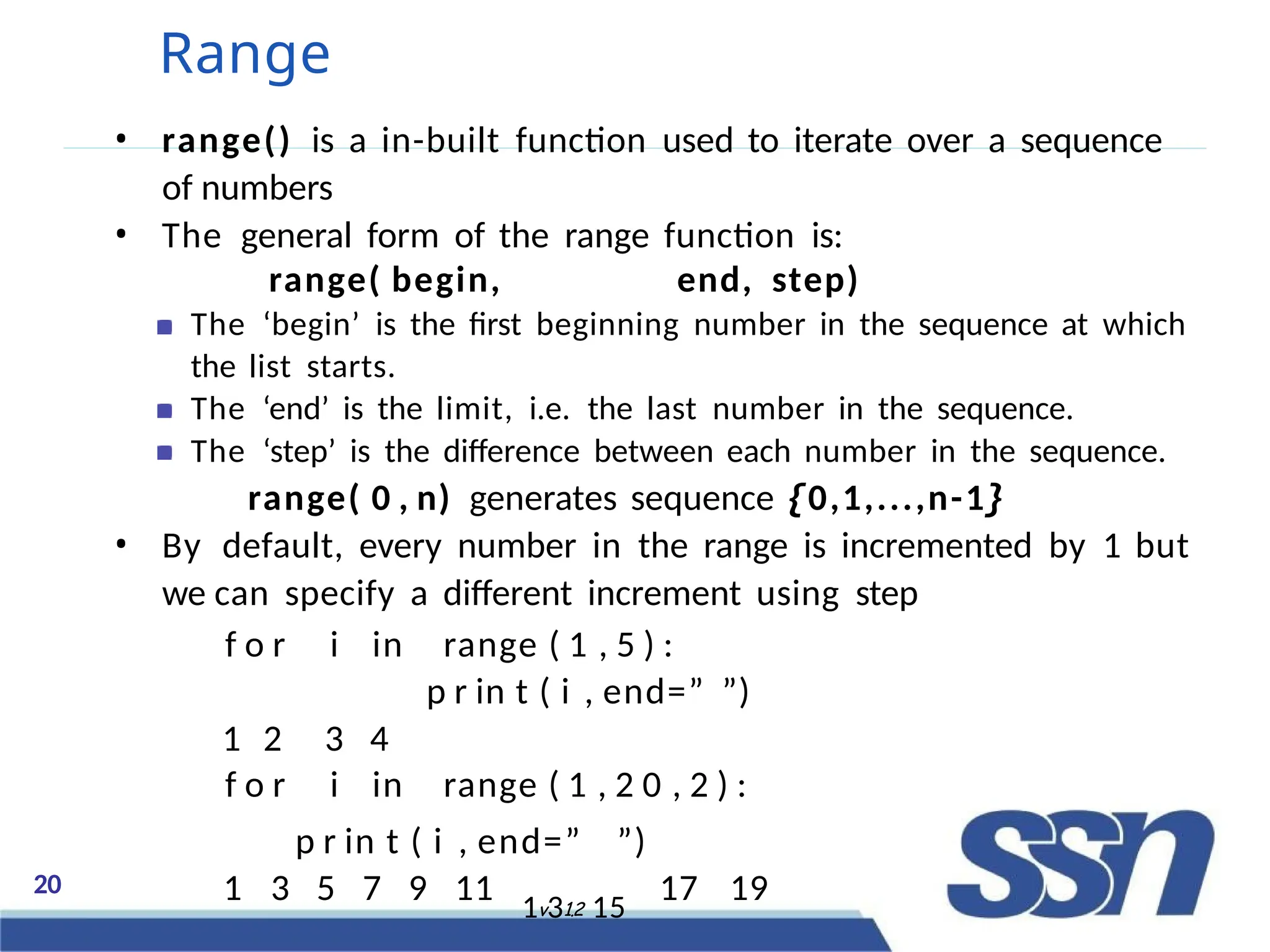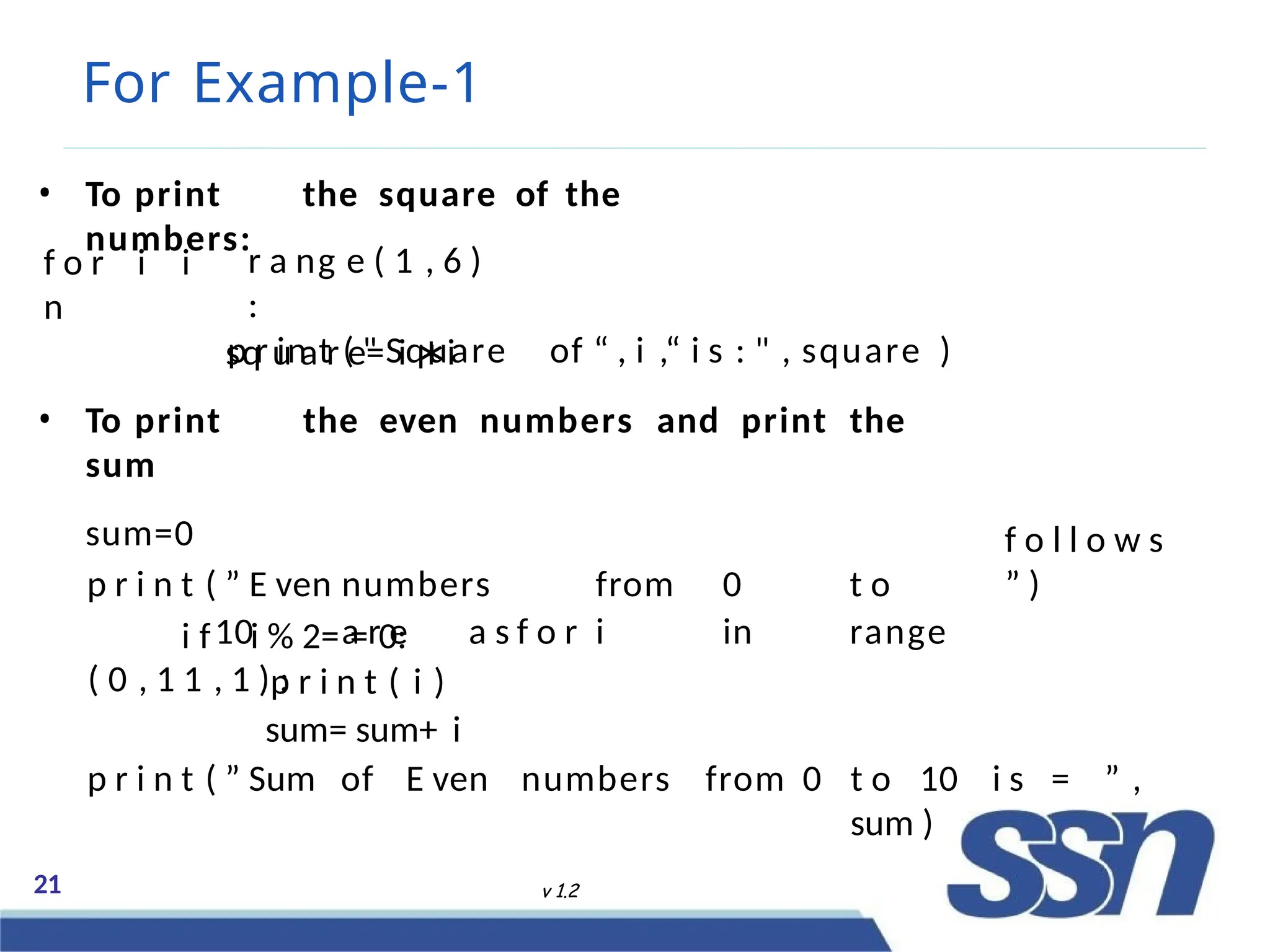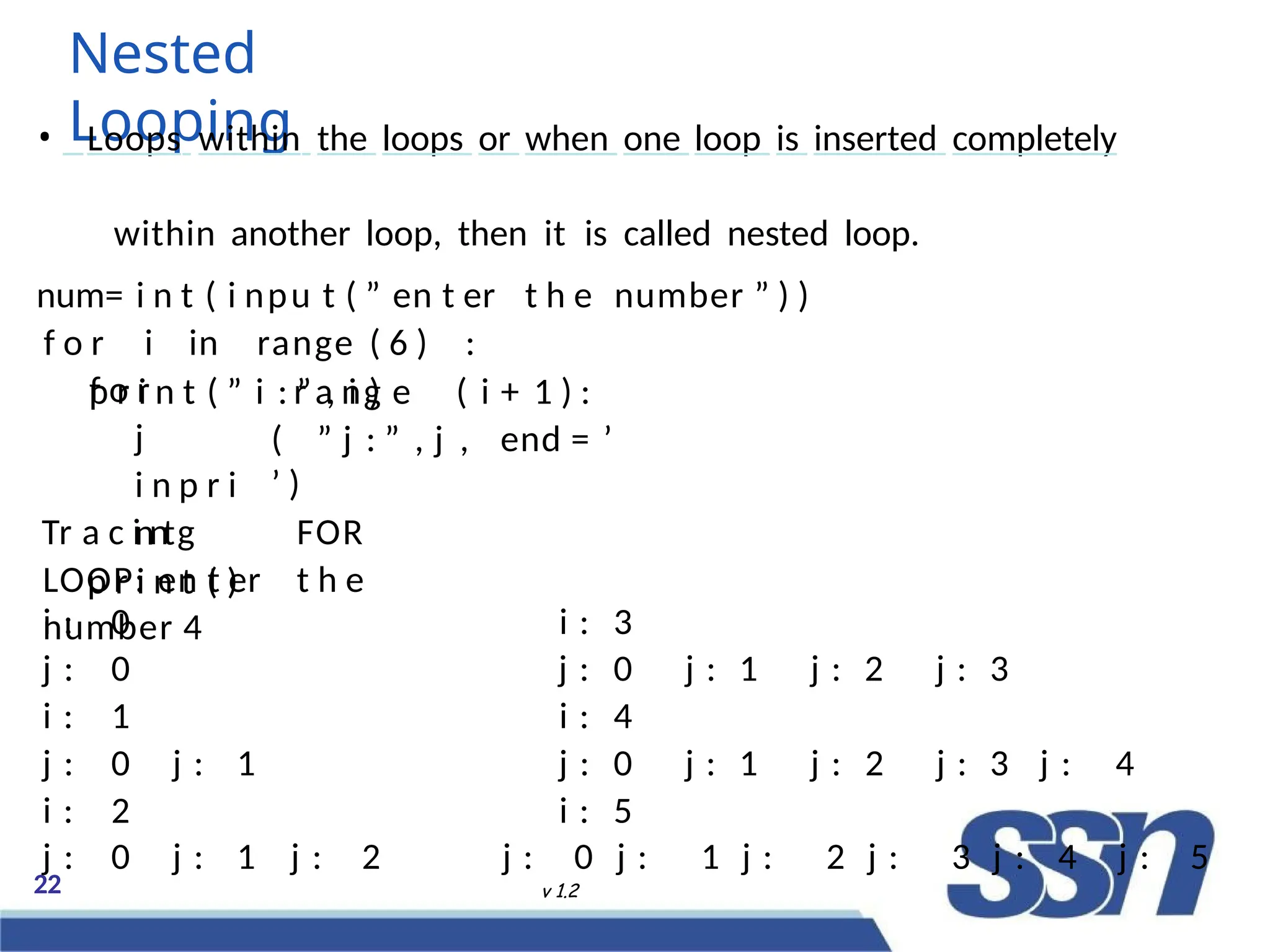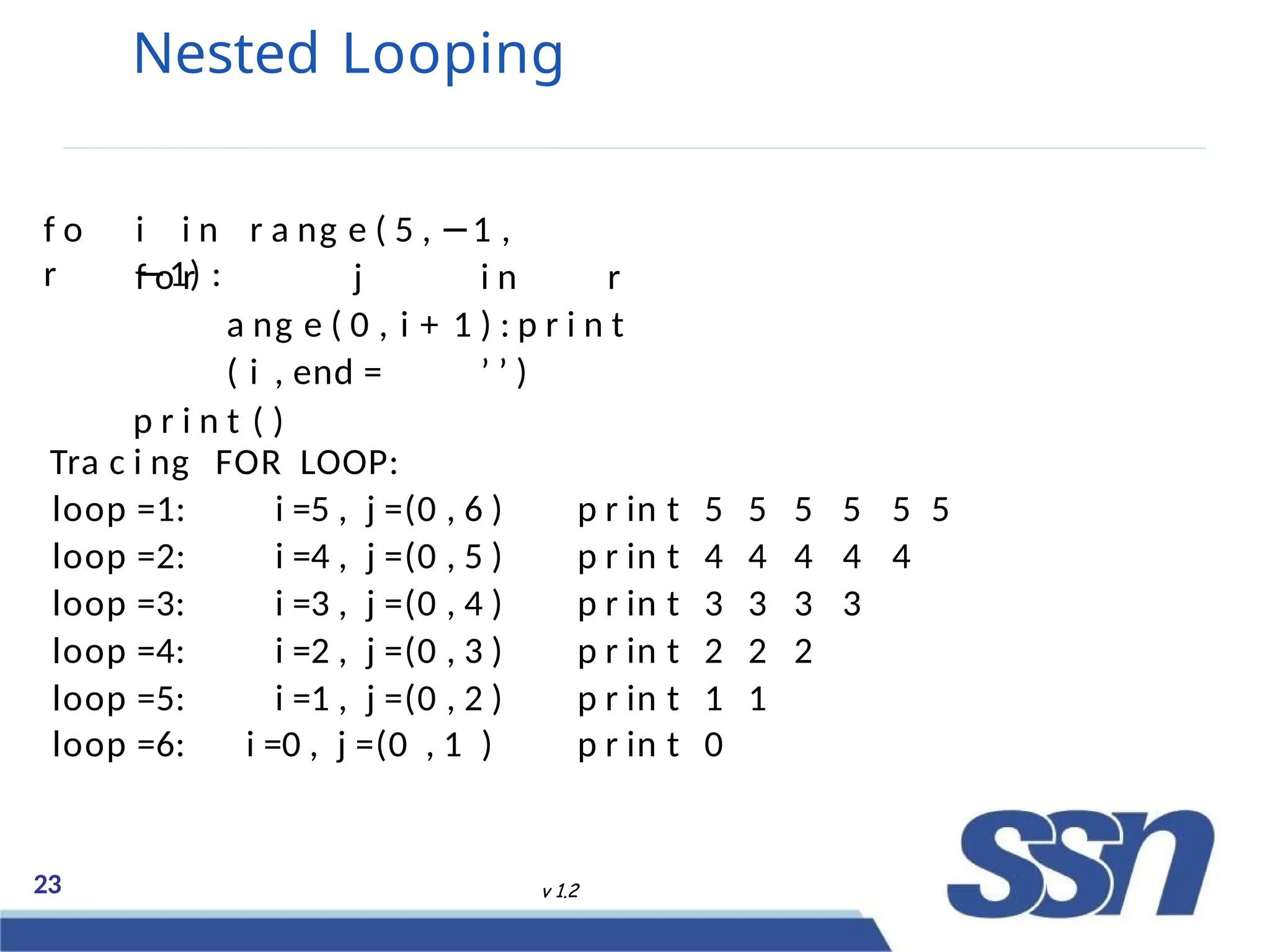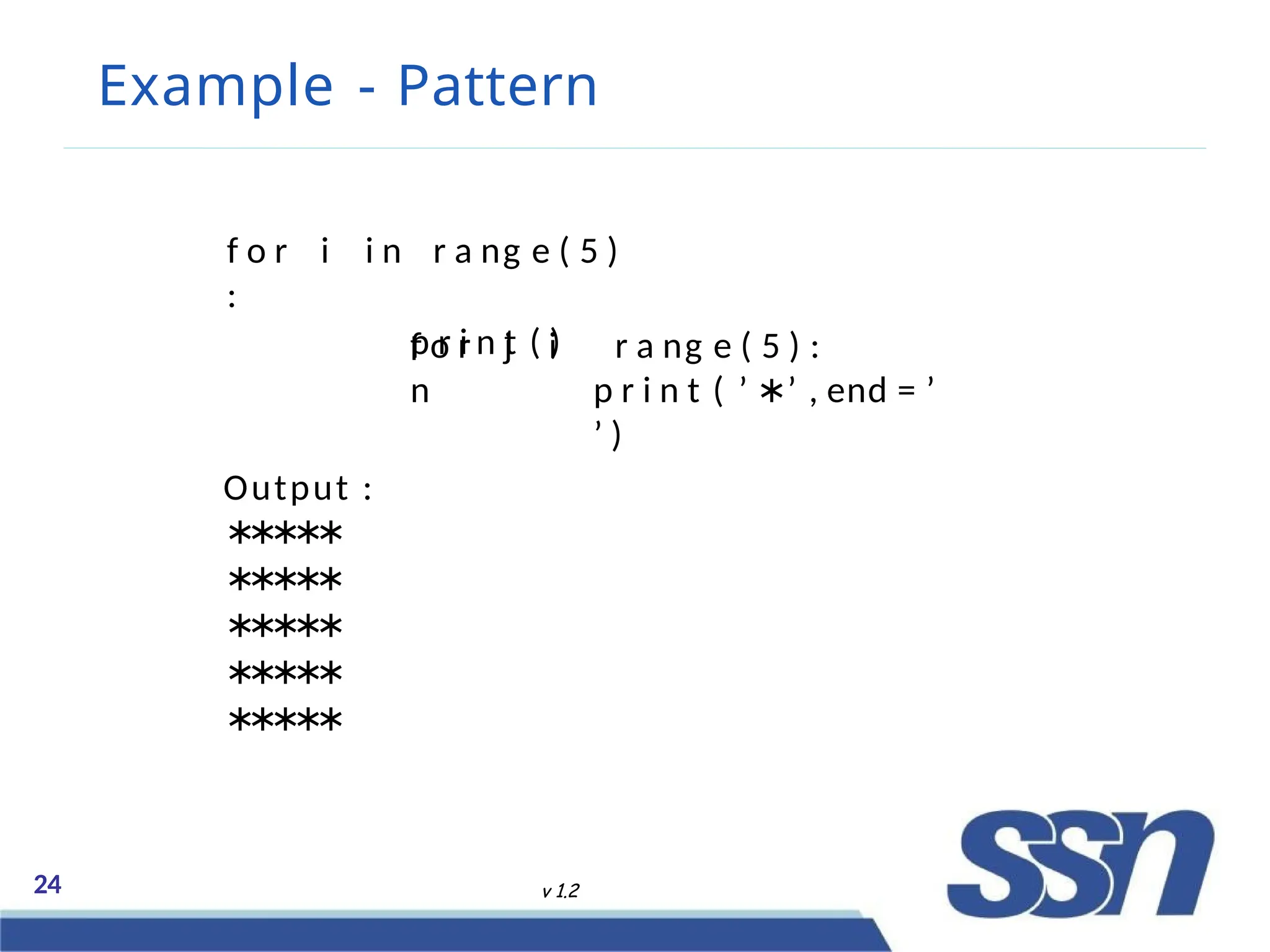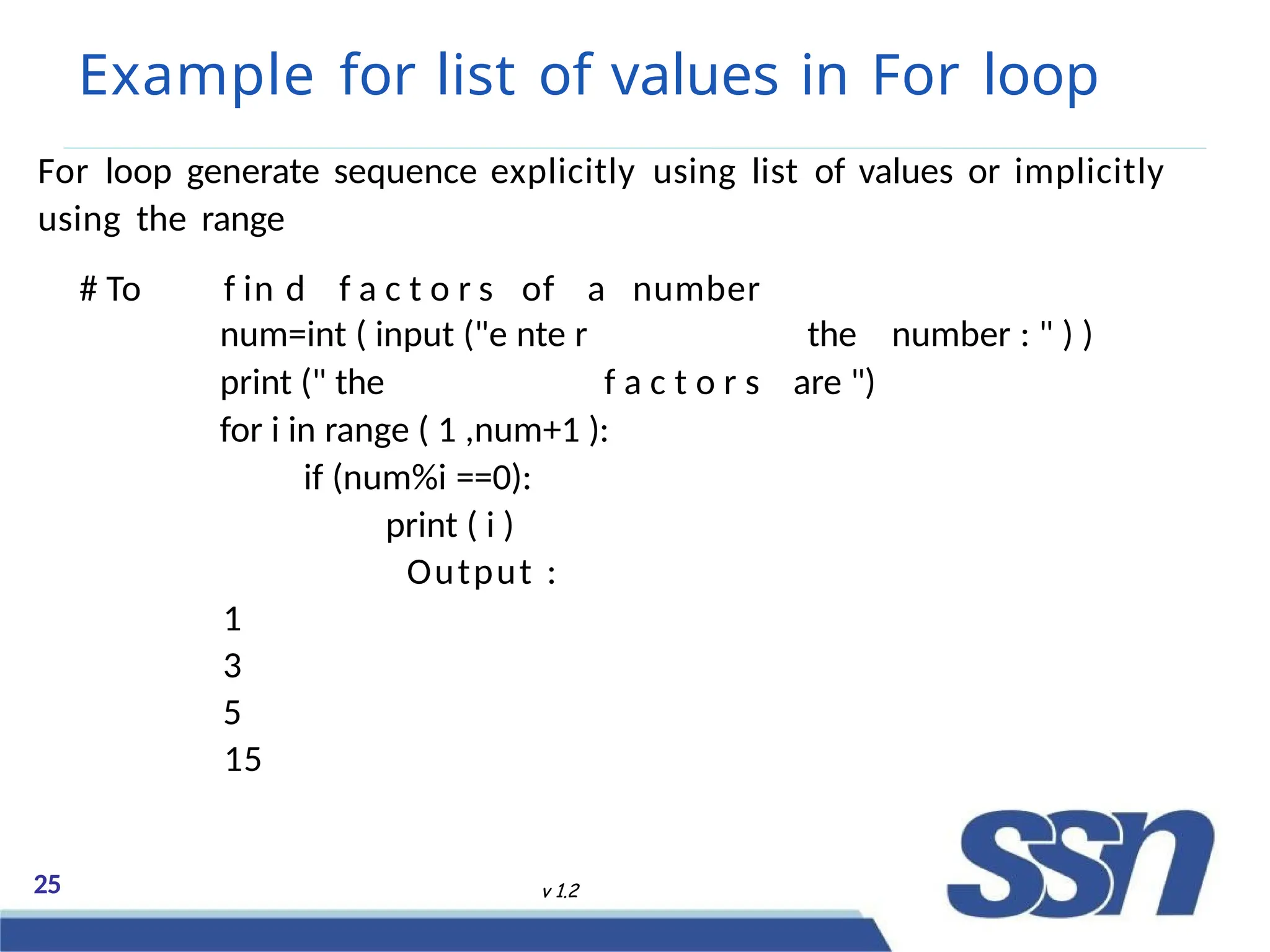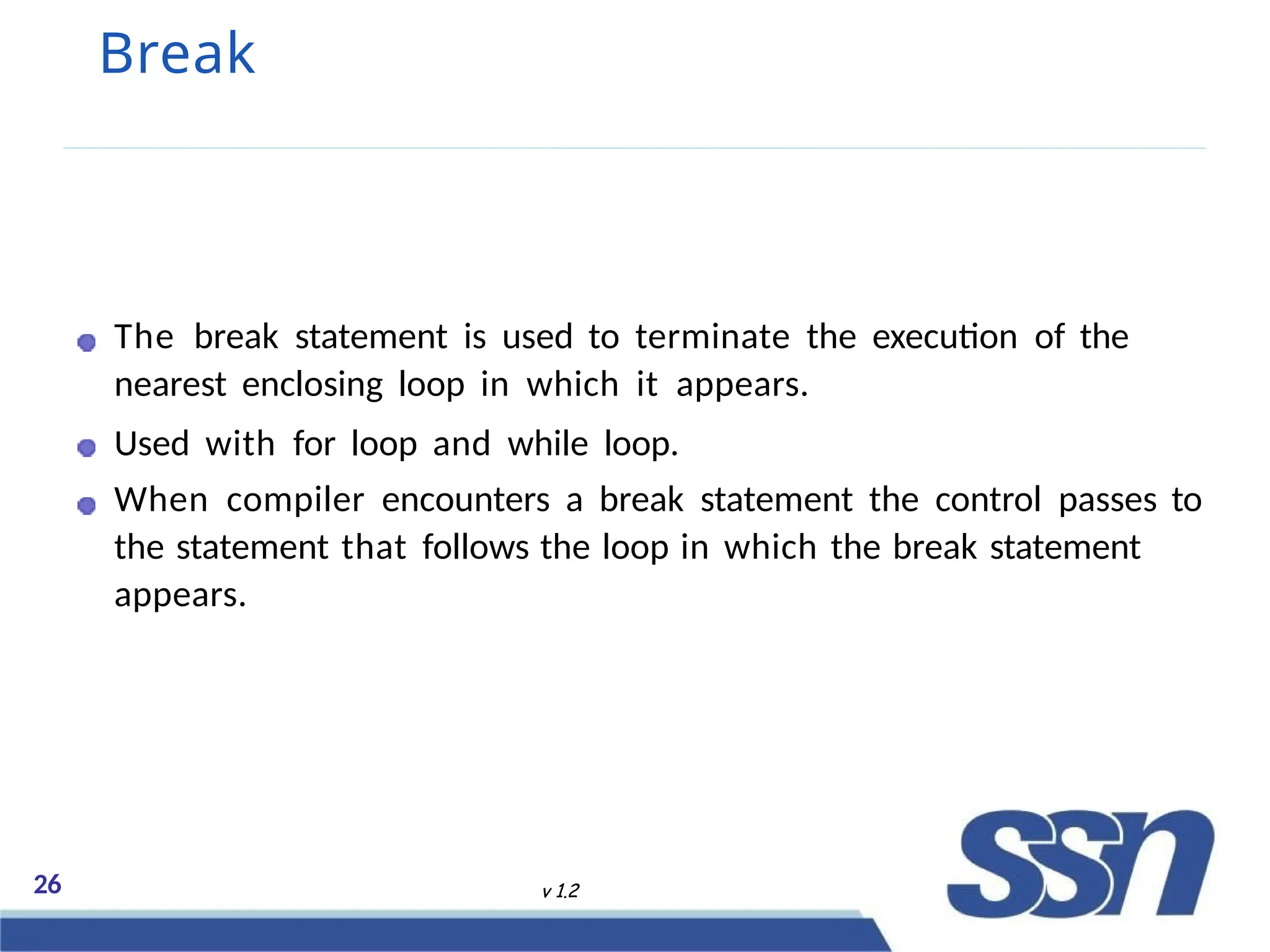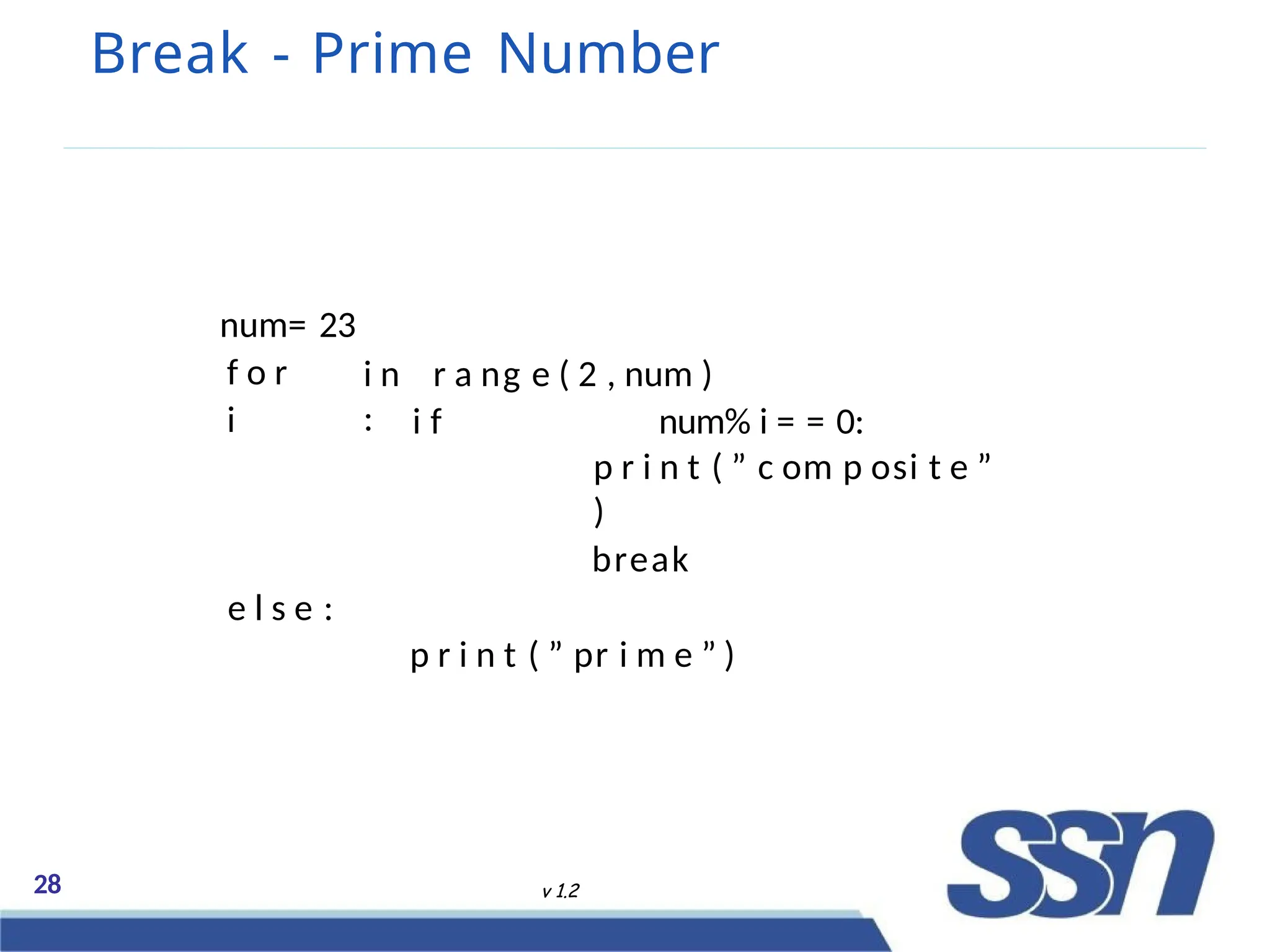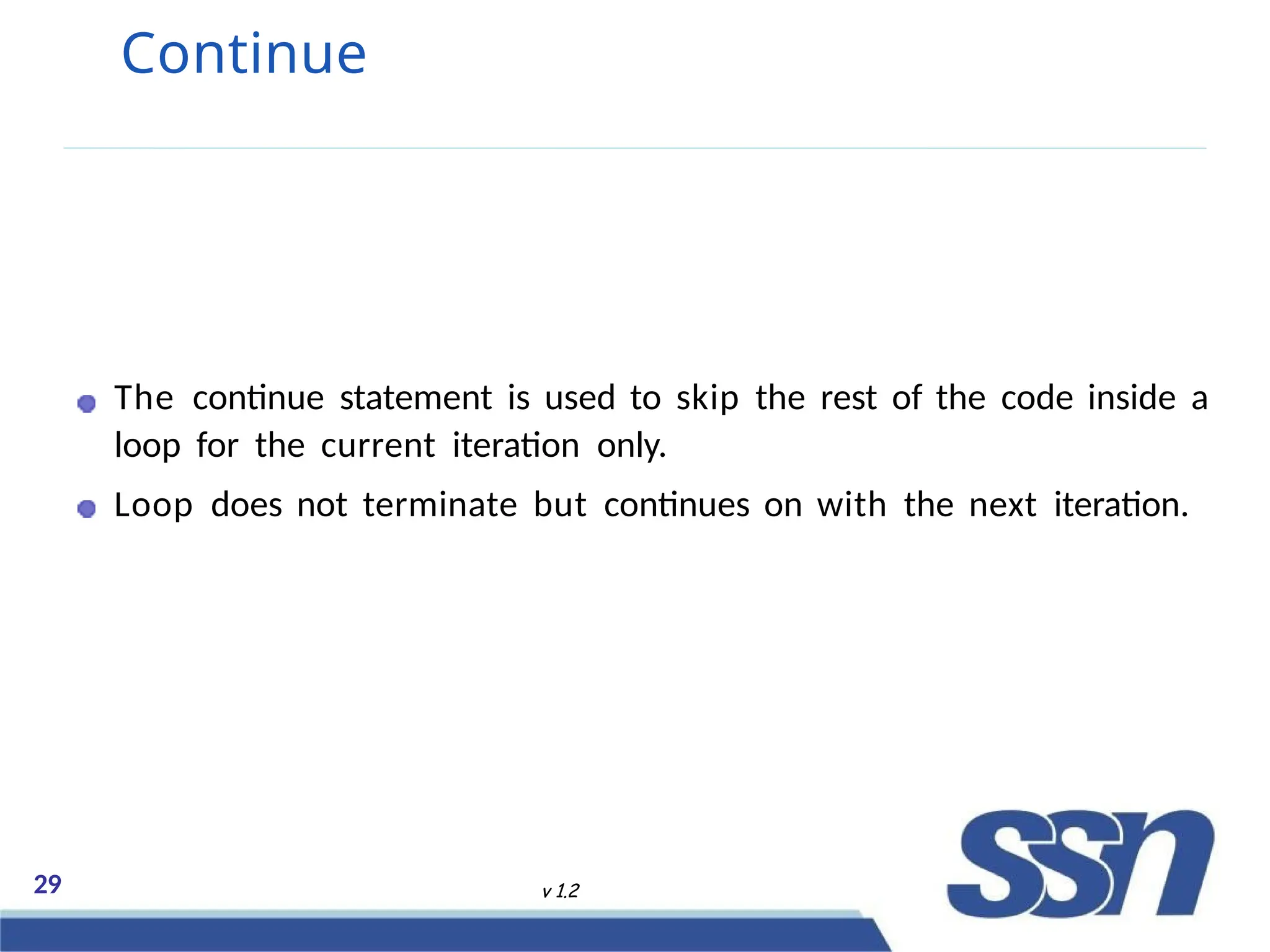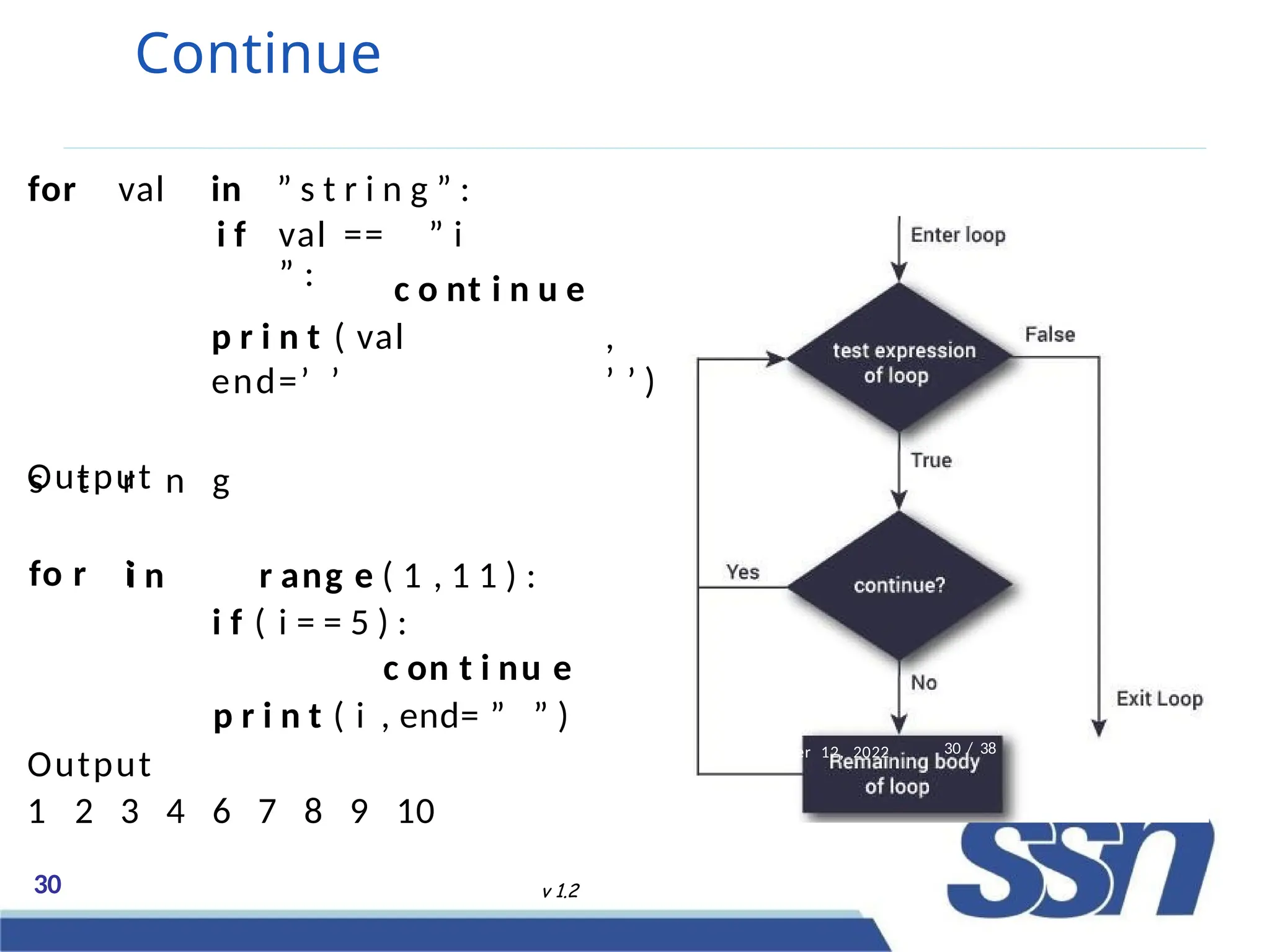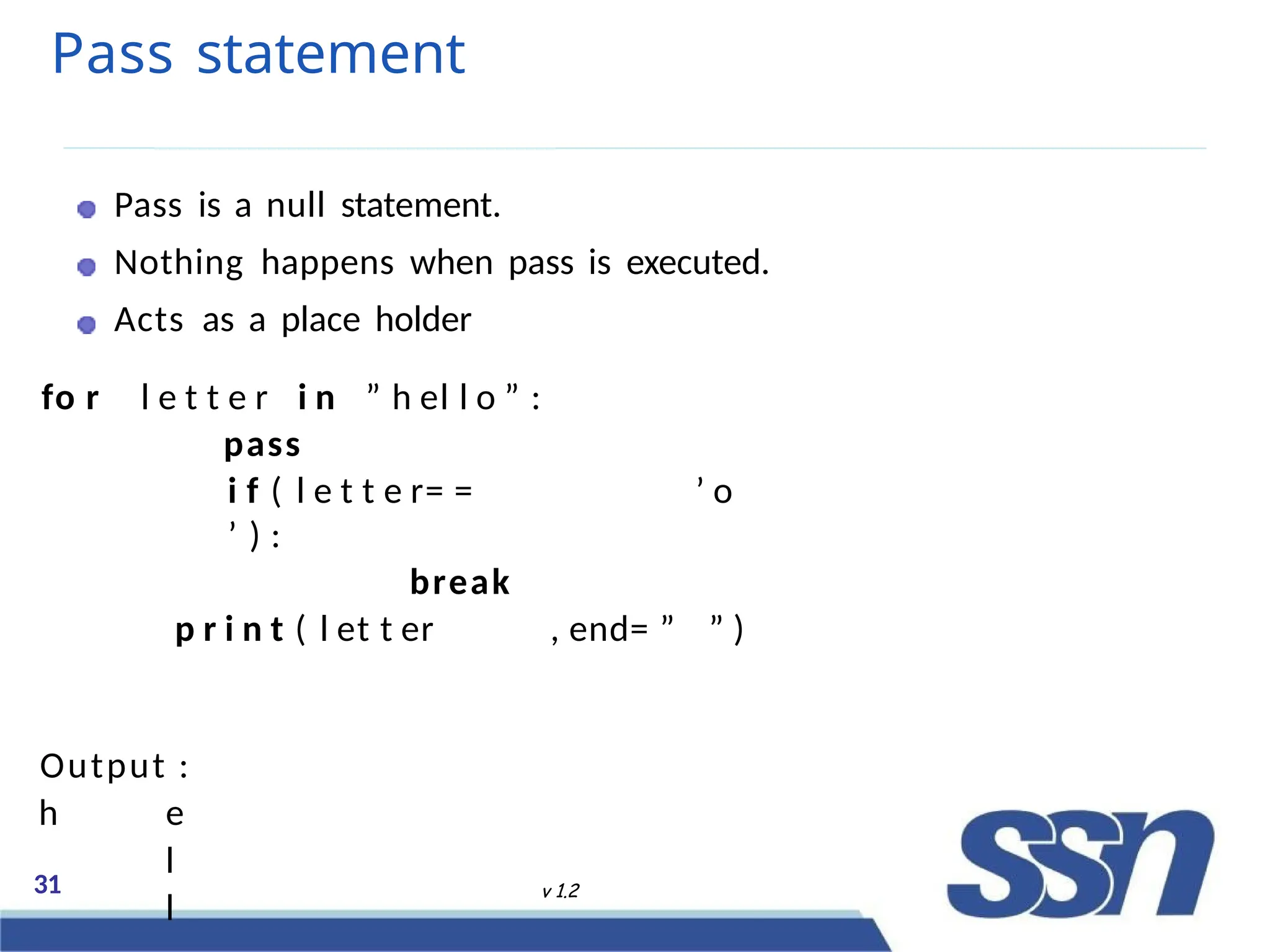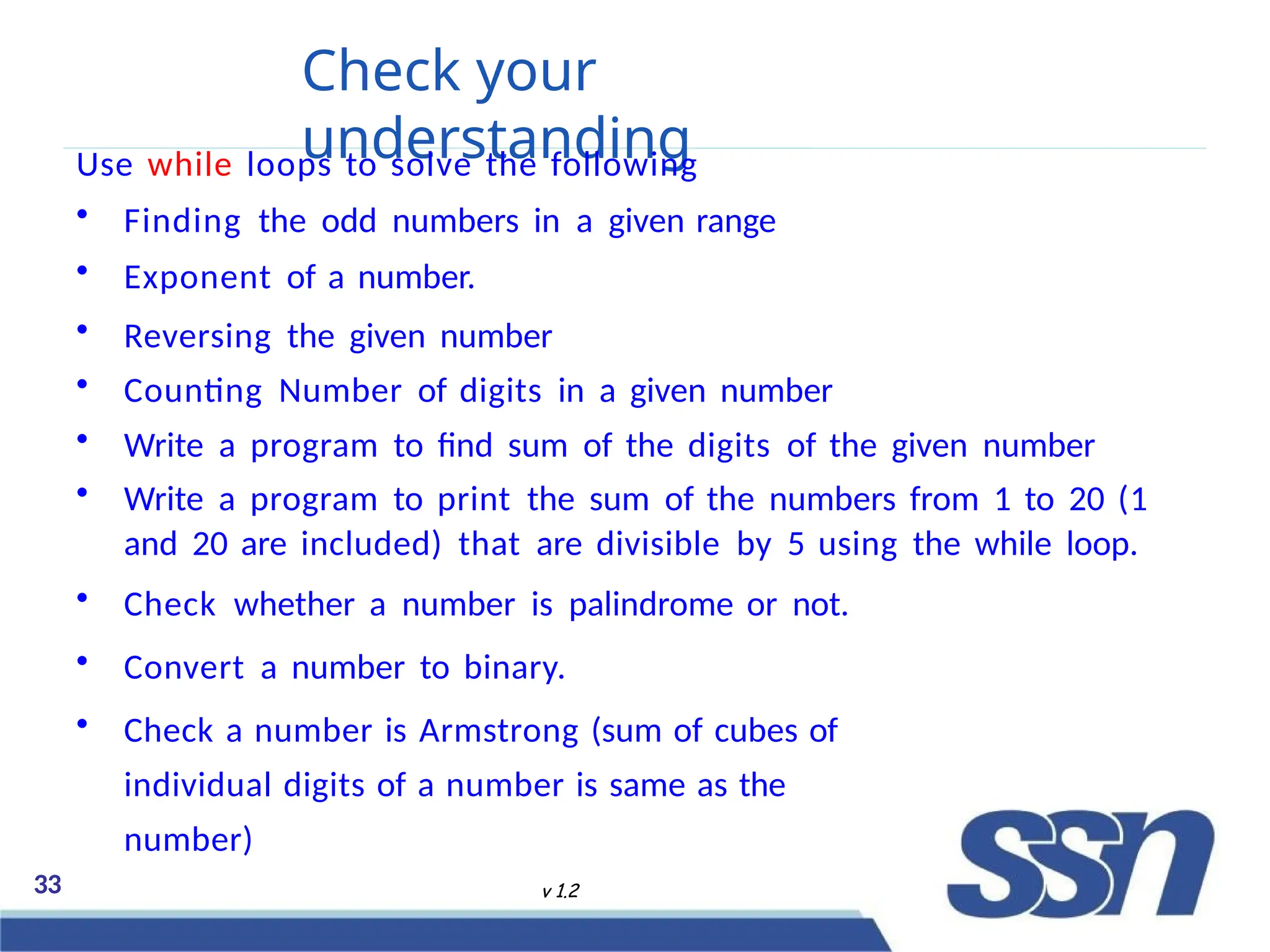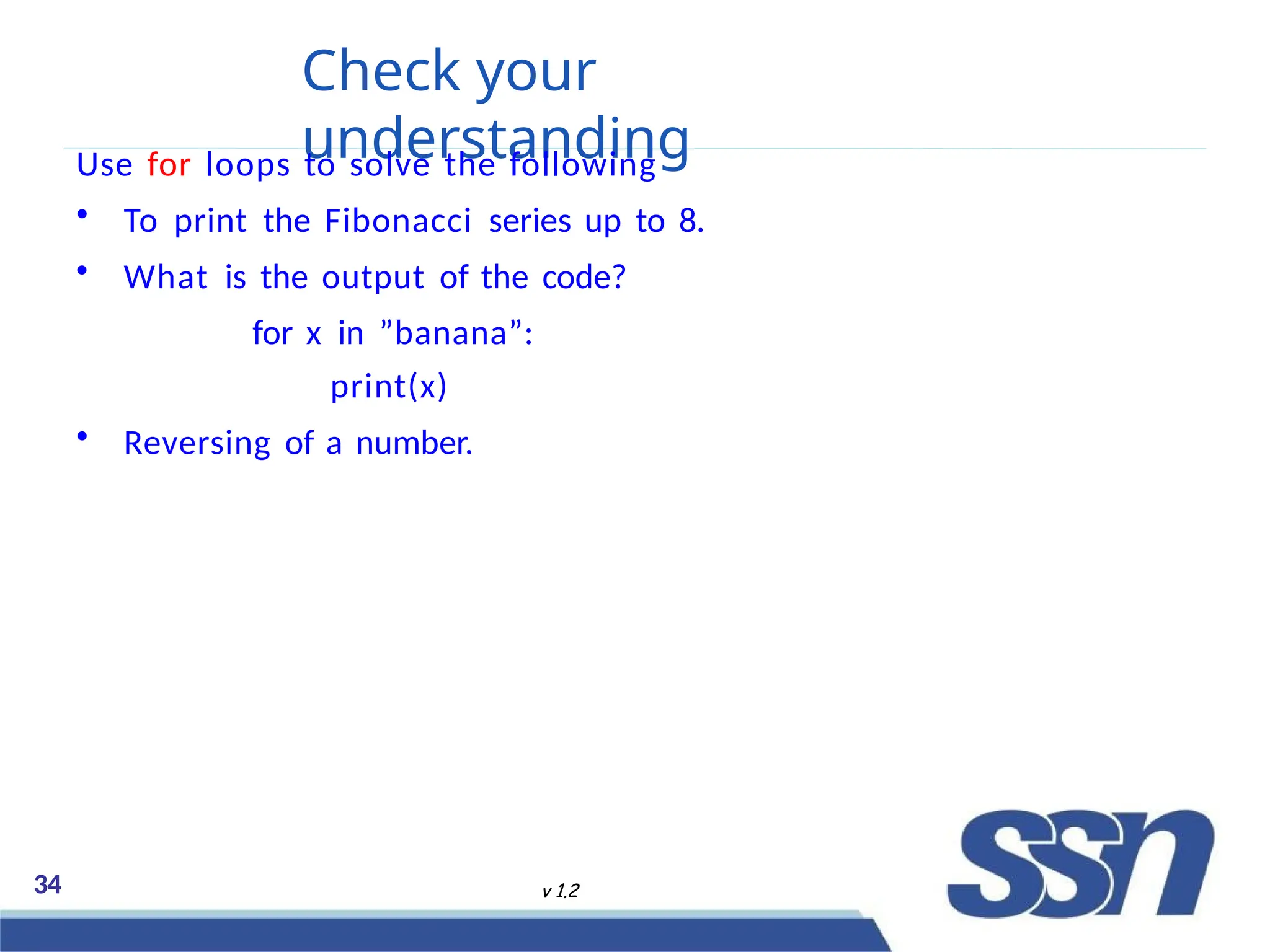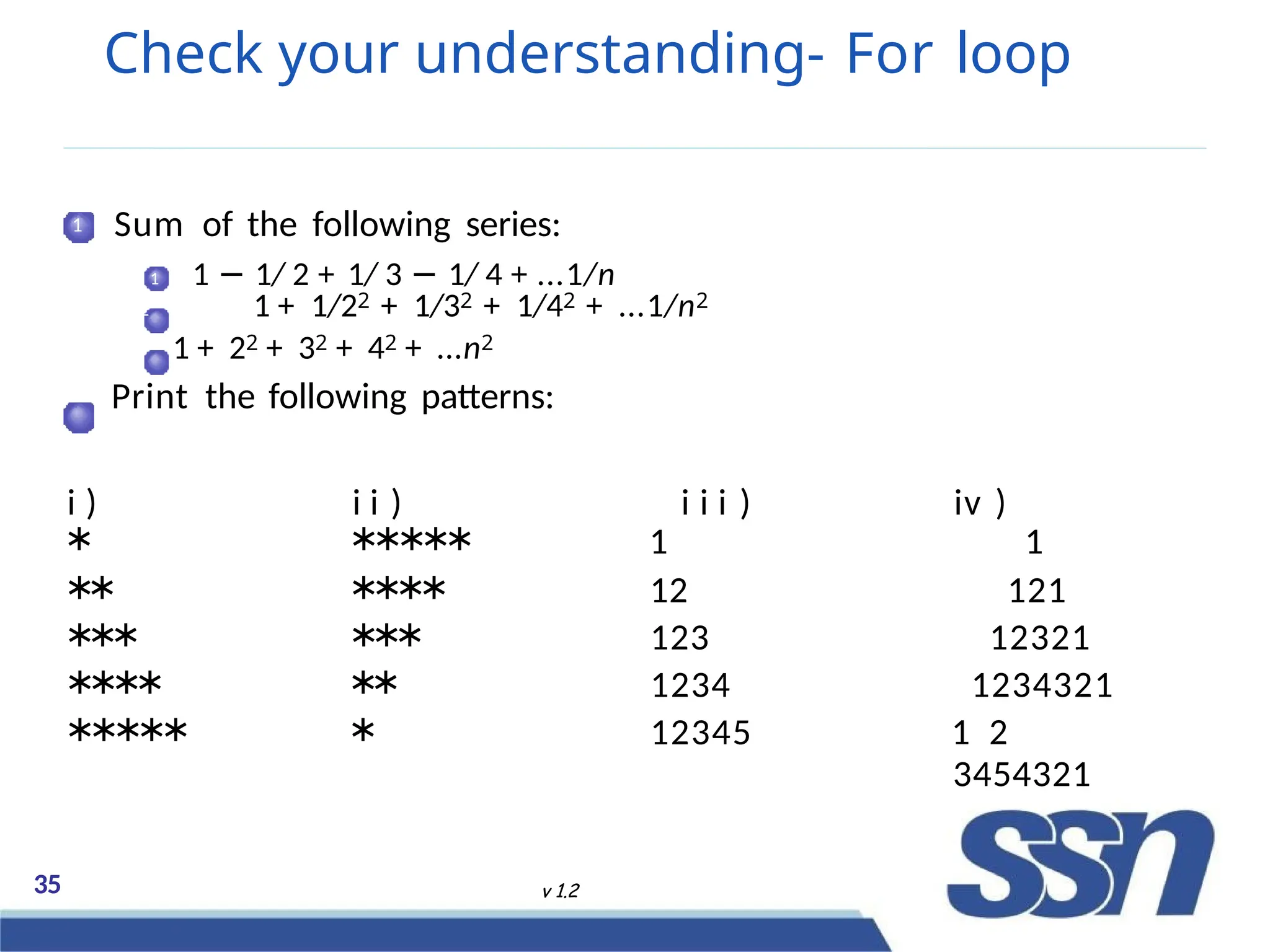The document provides a detailed overview of iterative and looping statements in Python, focusing on while loops and for loops. It explains their syntax, use cases, control flow mechanisms, and includes examples of their implementation, such as the Euclidean algorithm for finding the greatest common divisor. Additionally, it covers nested loops, control statements like break and continue, and provides exercises for applying these concepts.
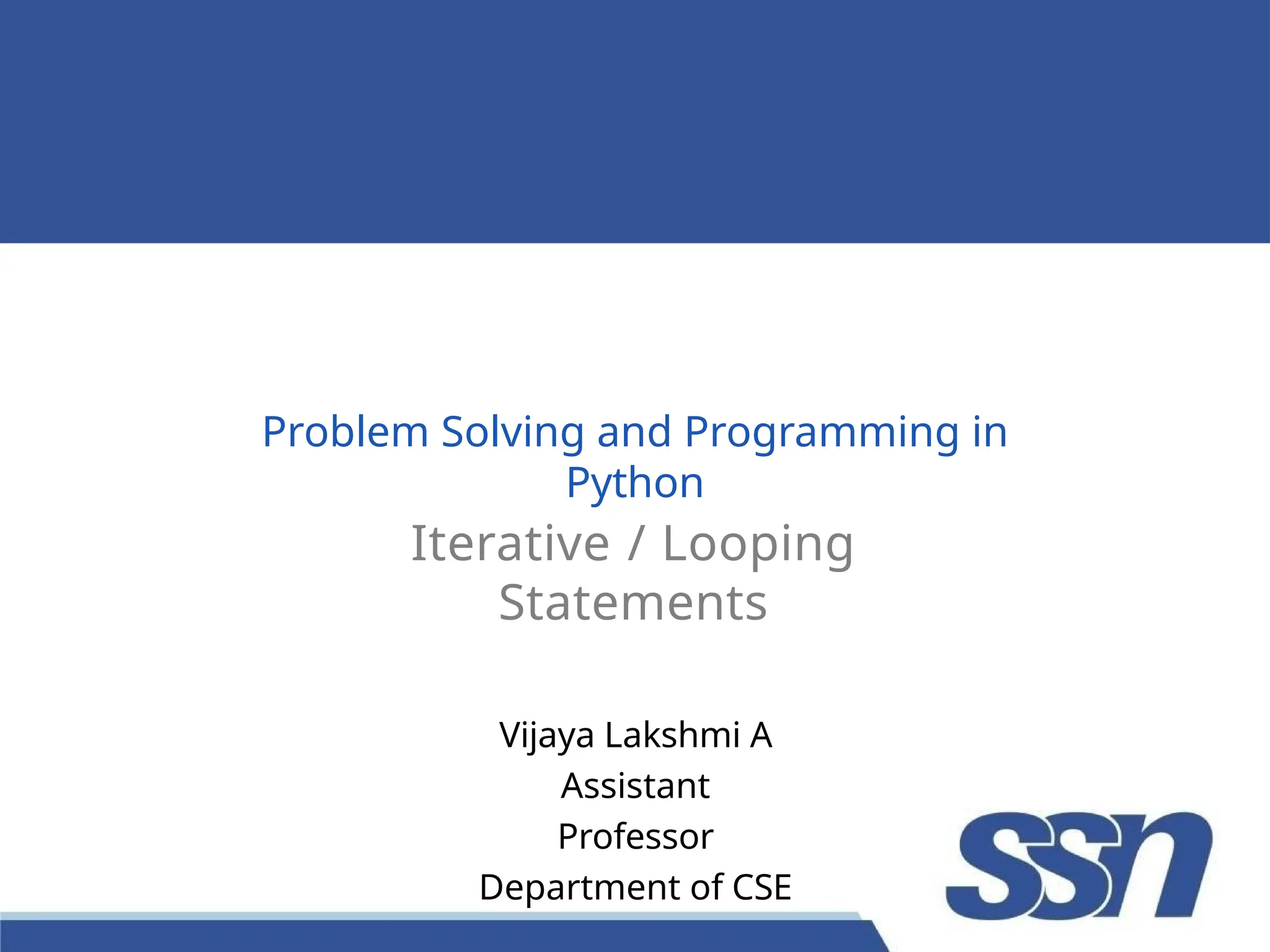
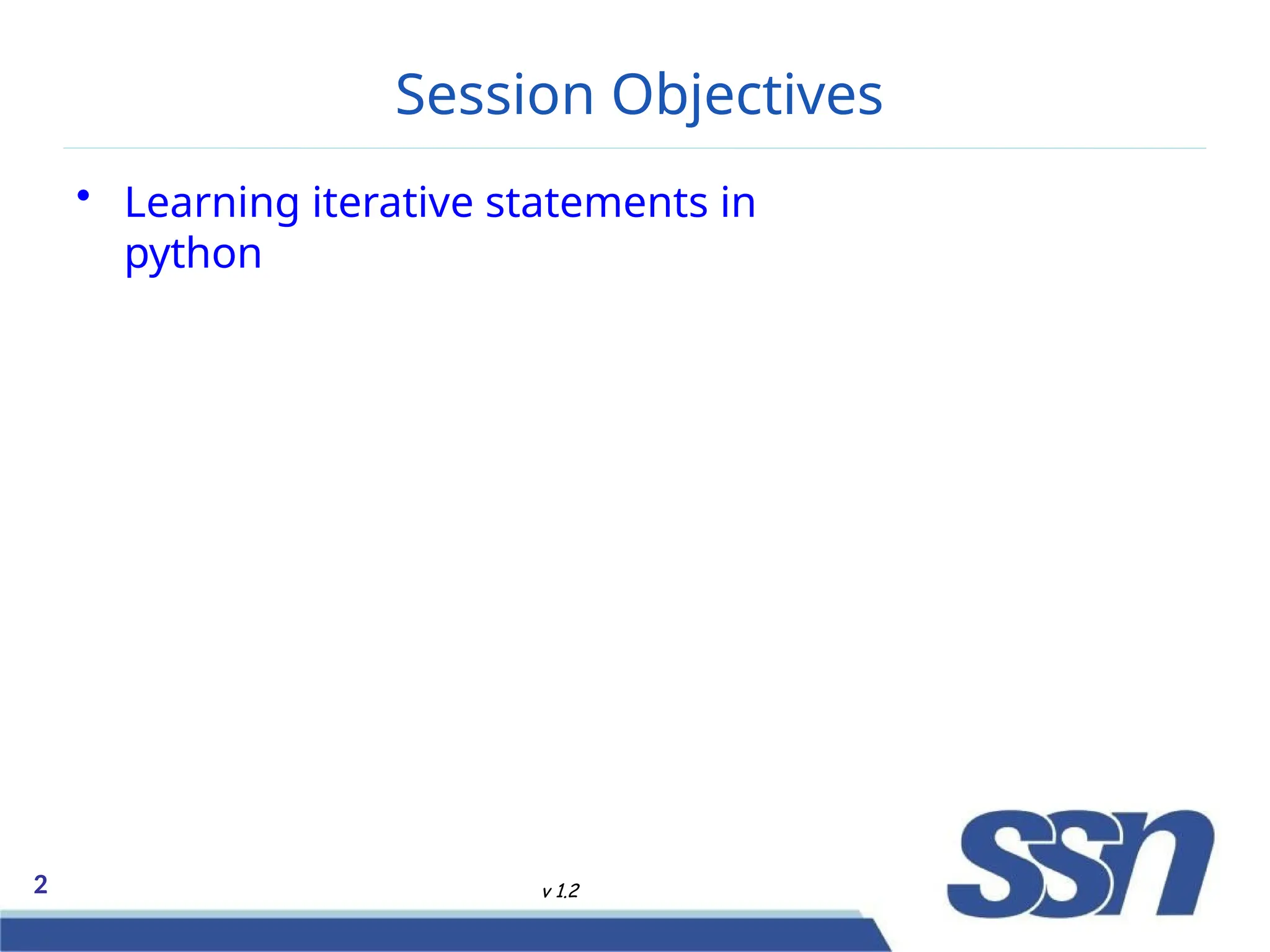
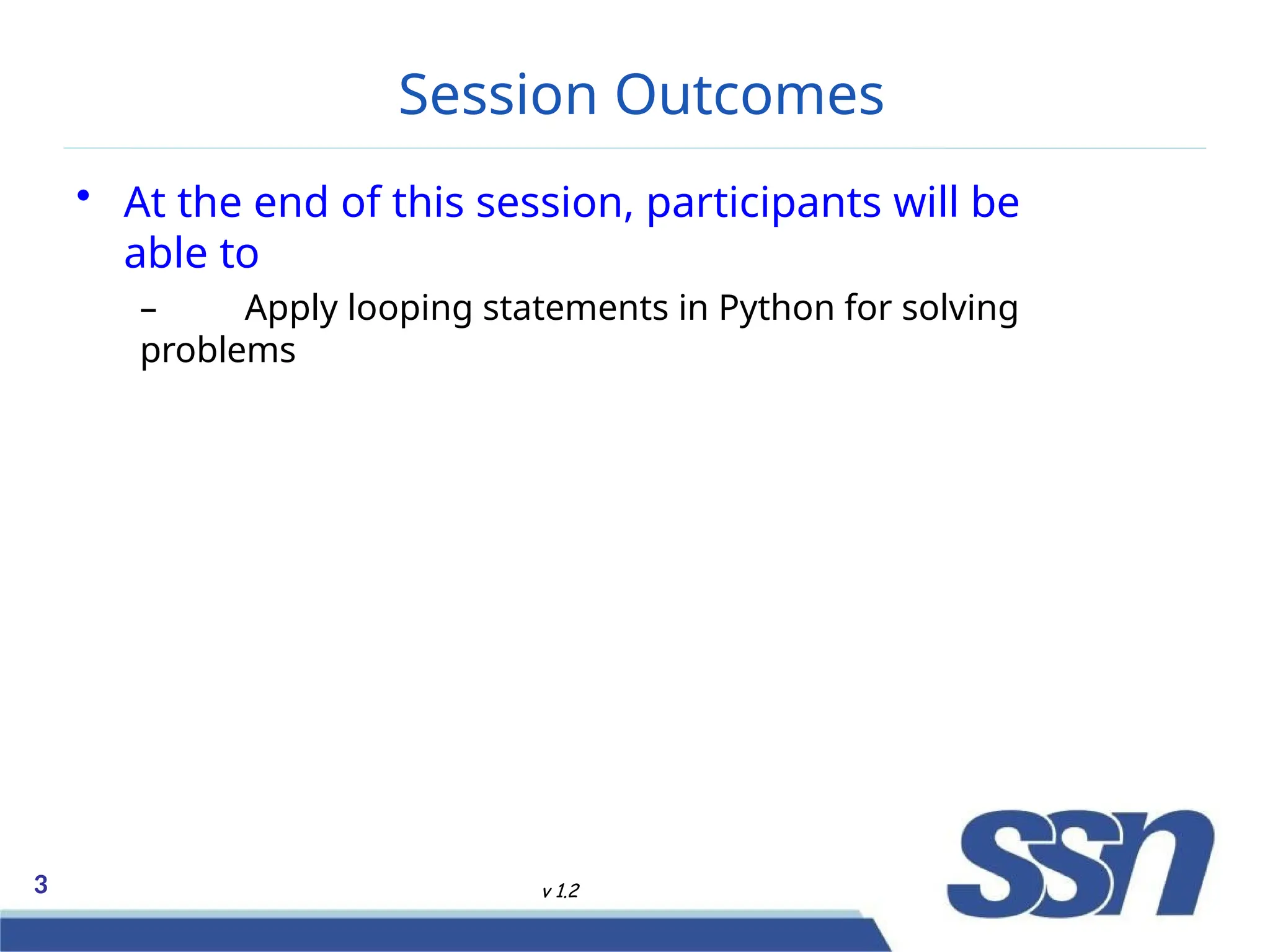
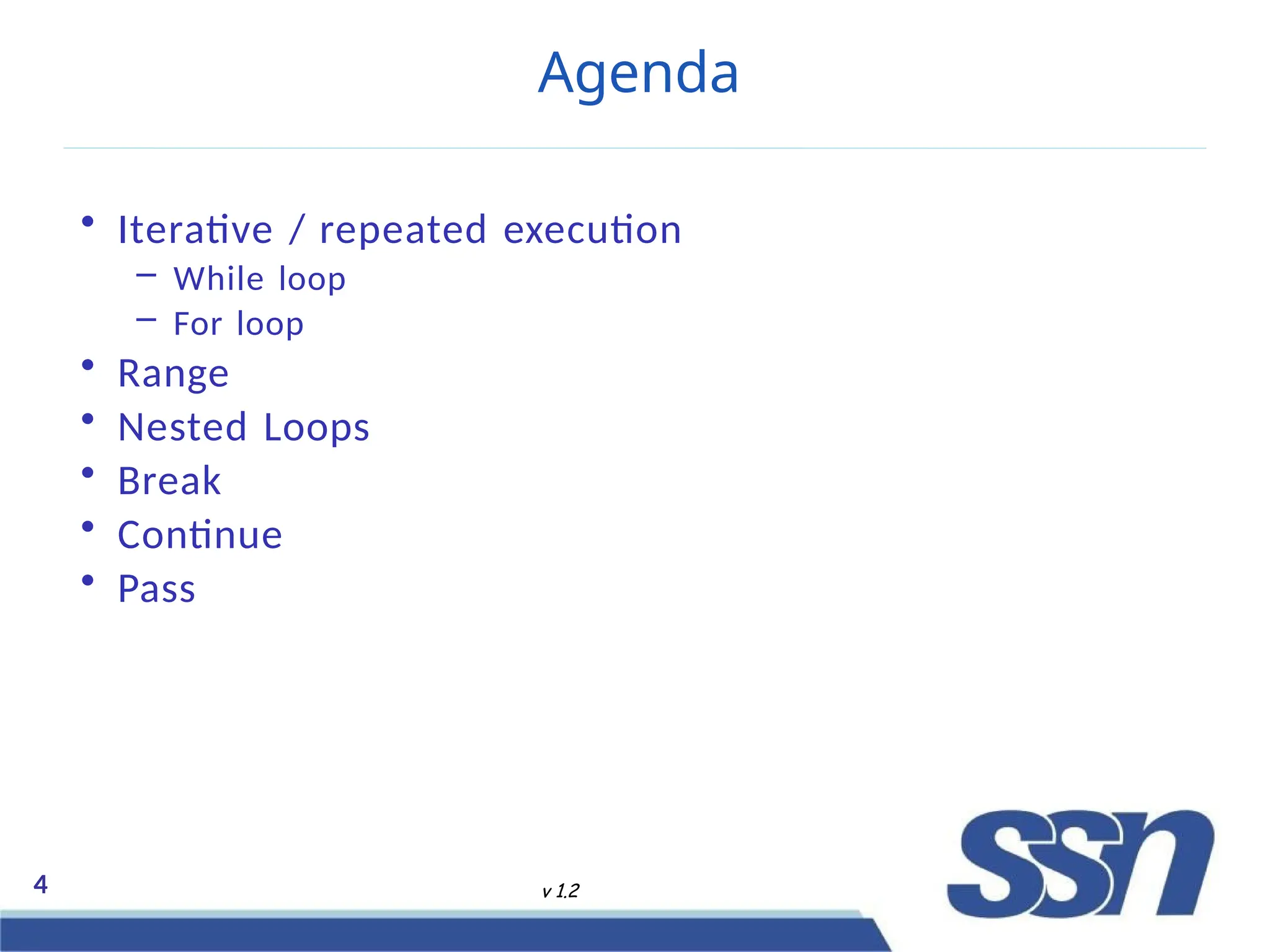
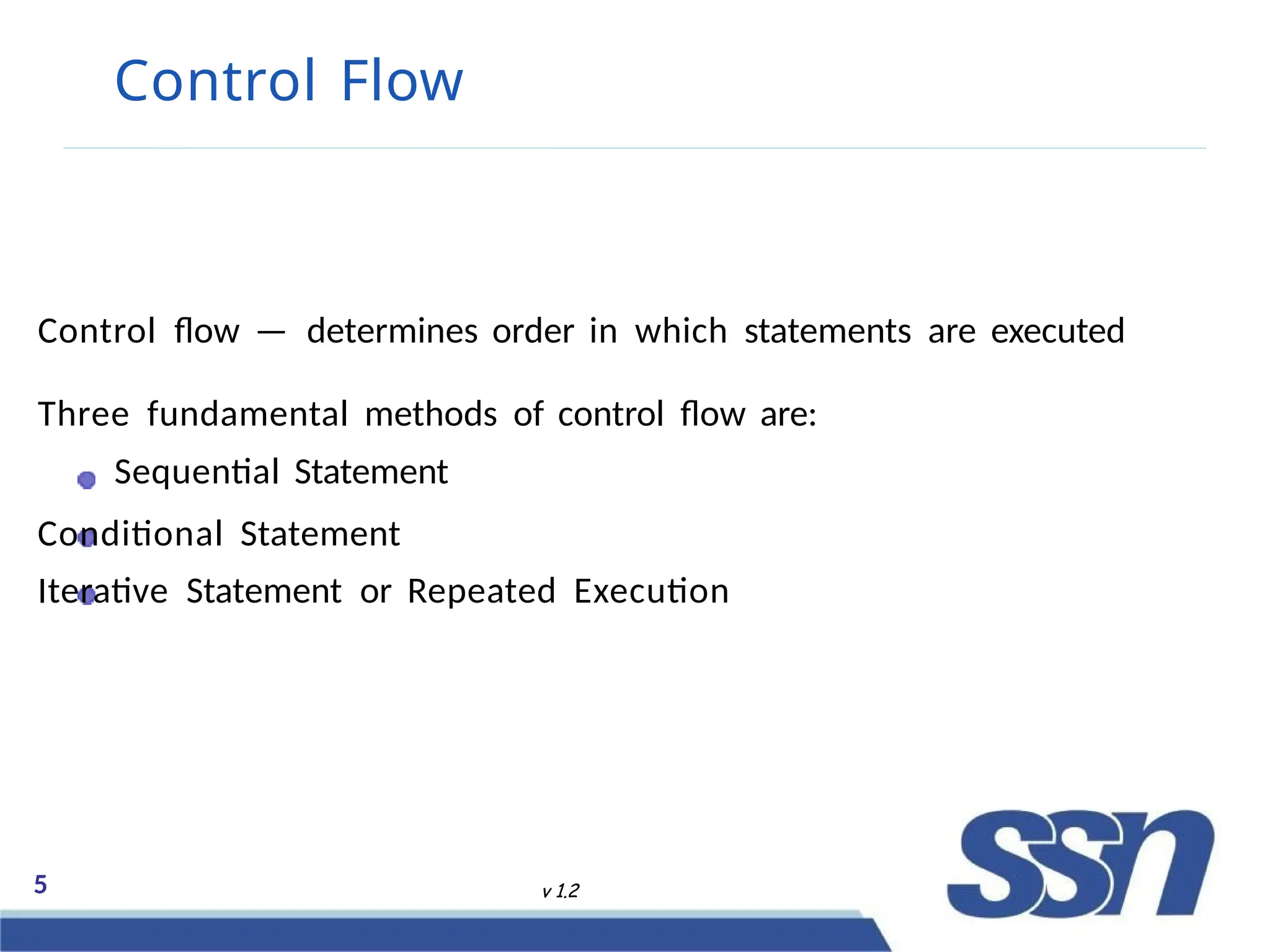
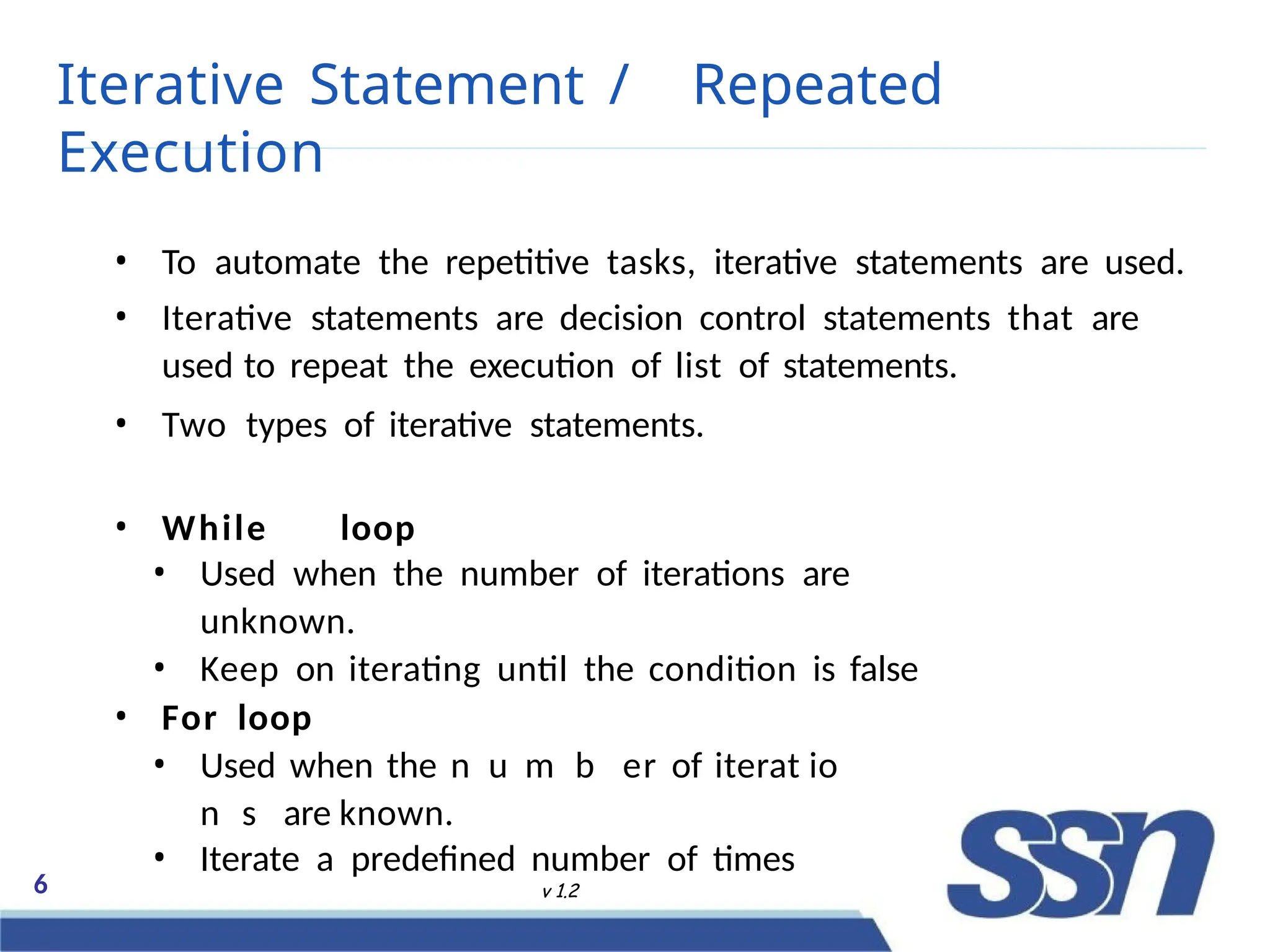
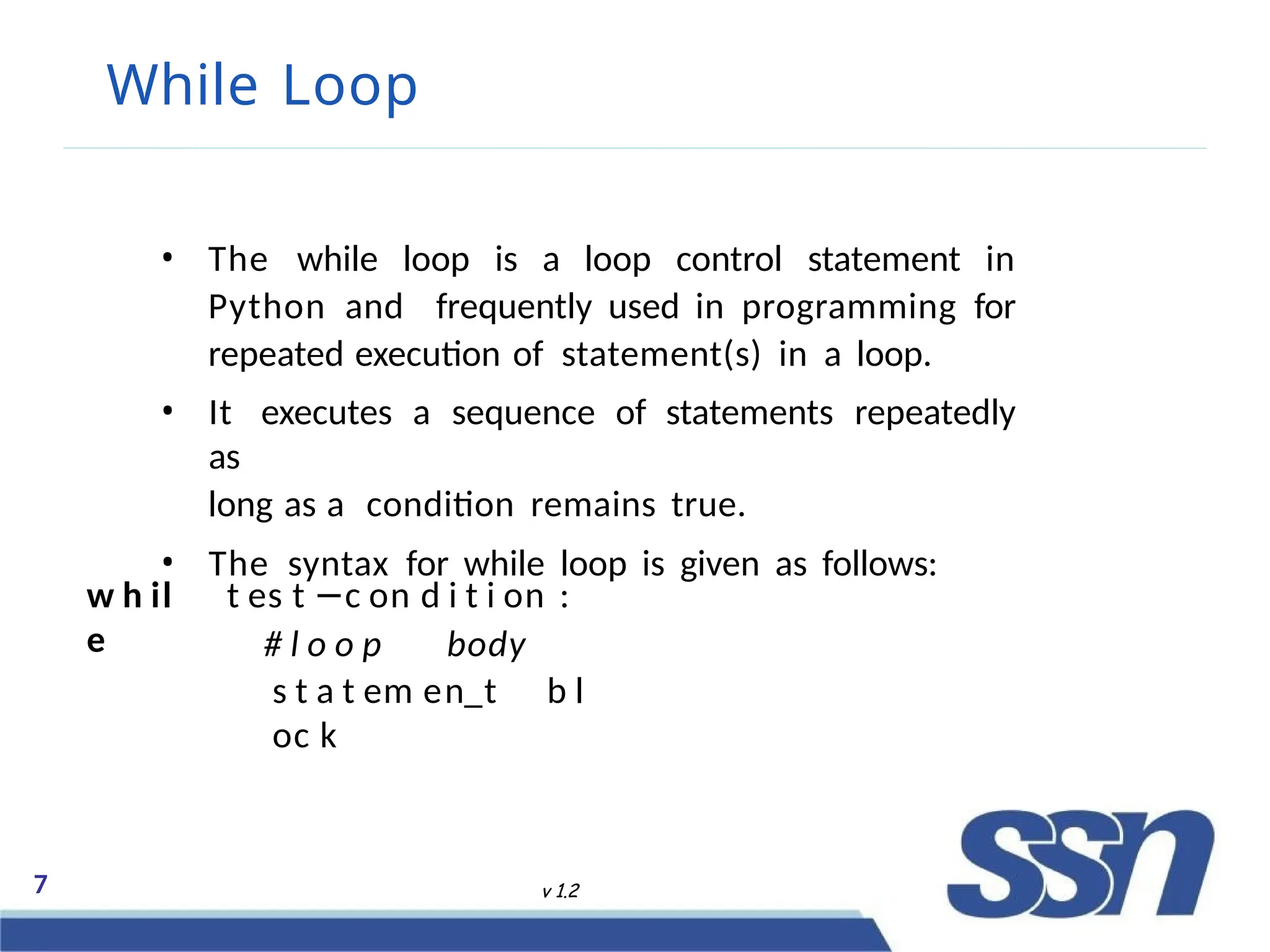
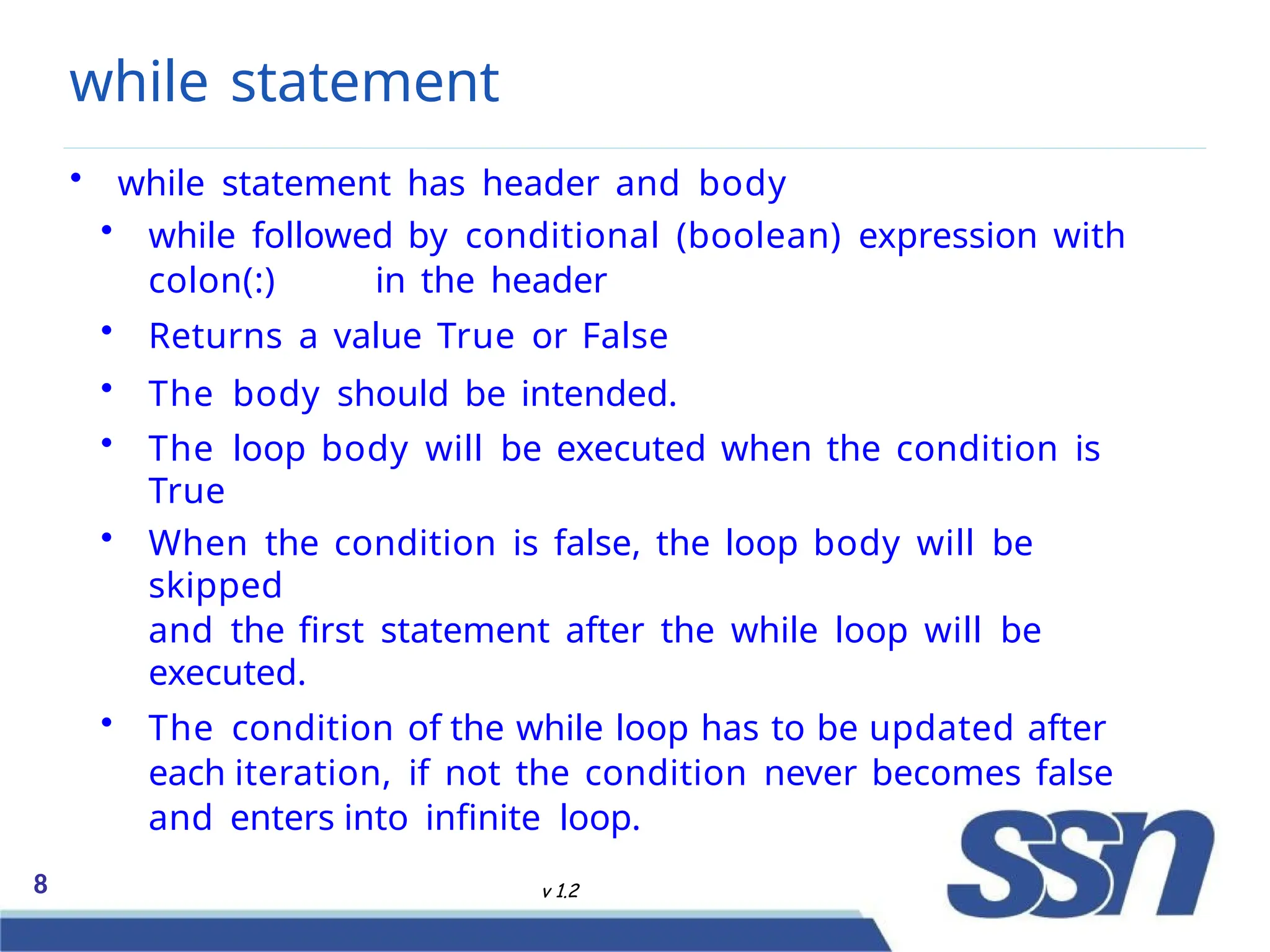
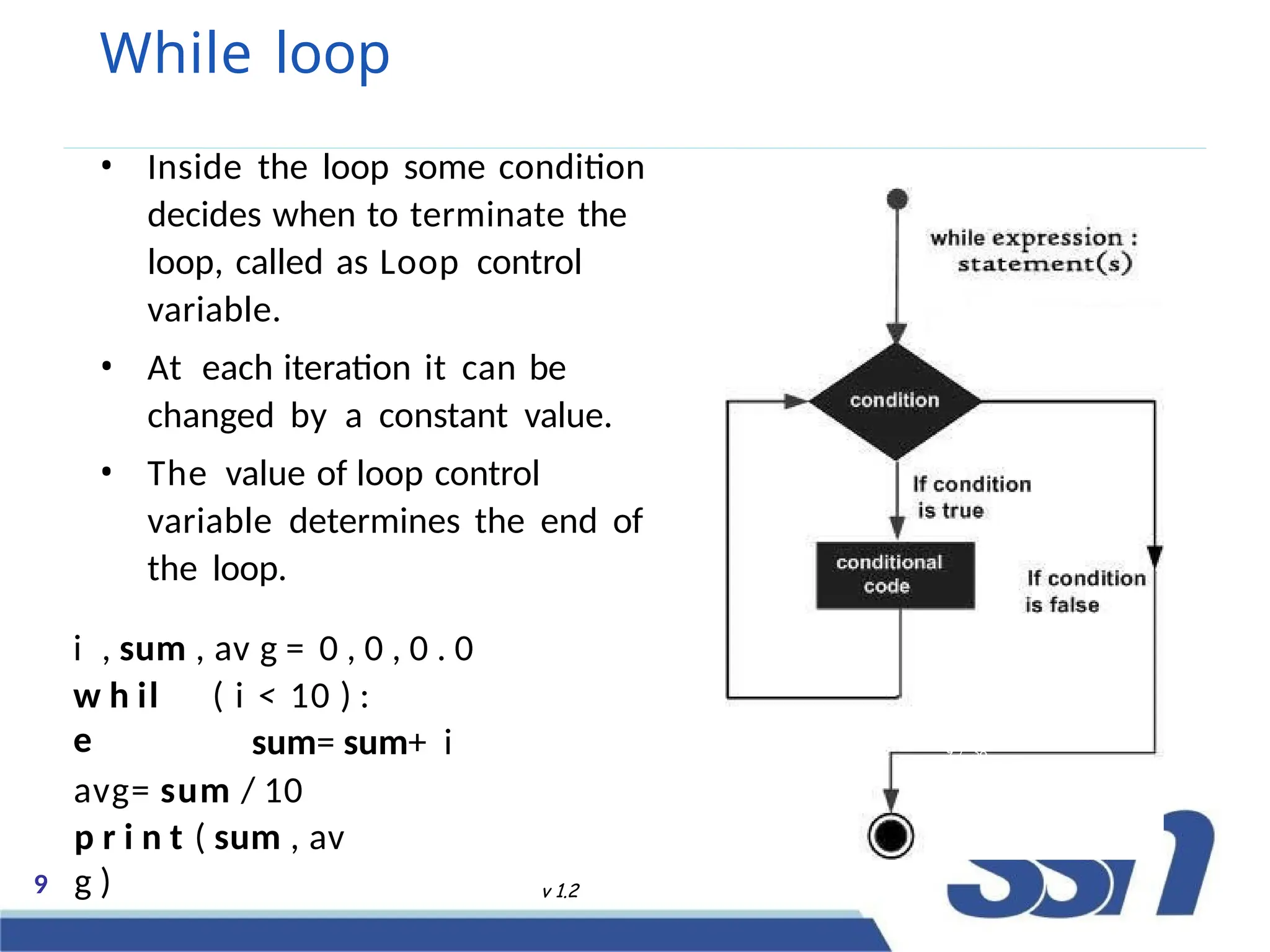
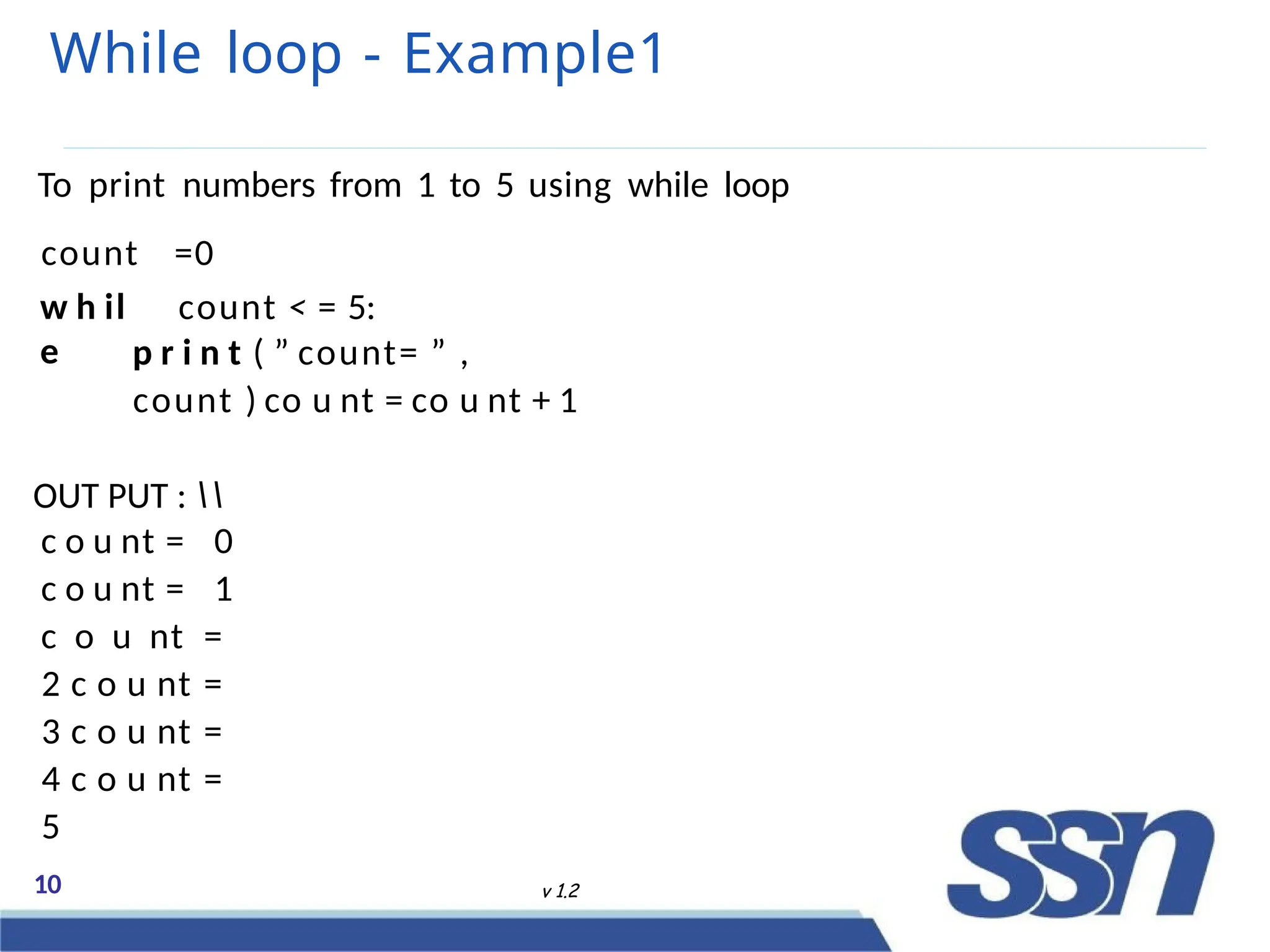
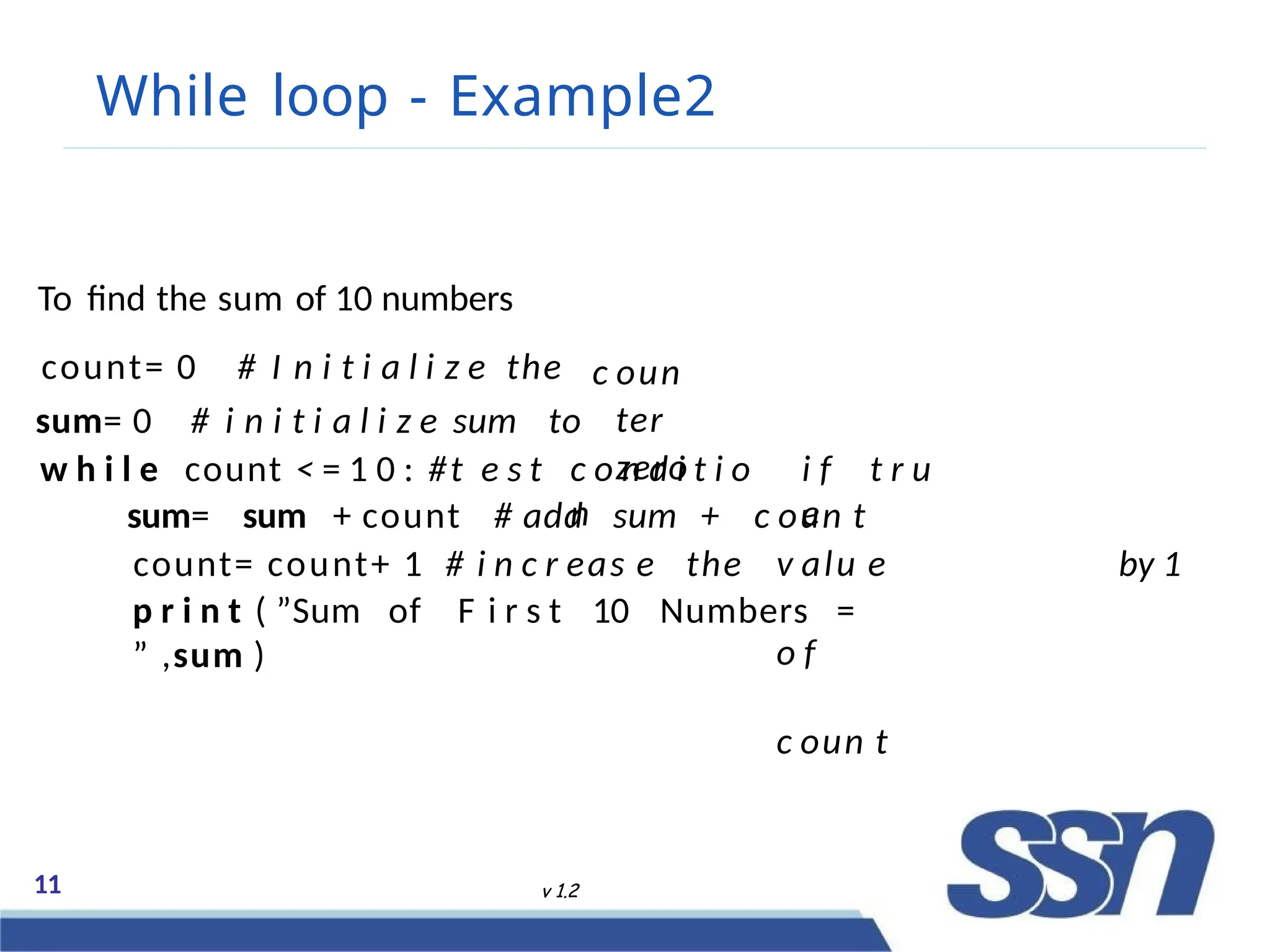
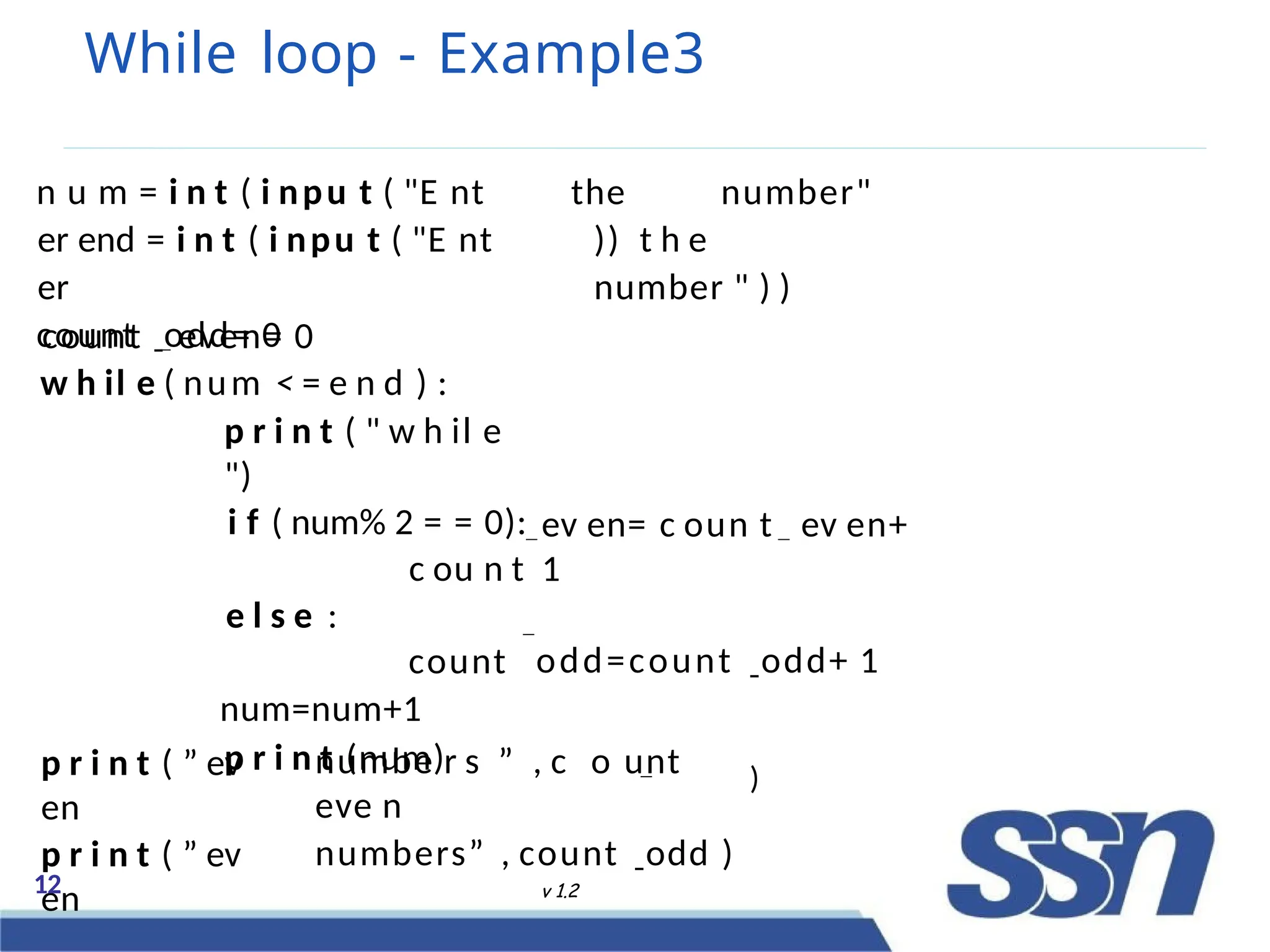
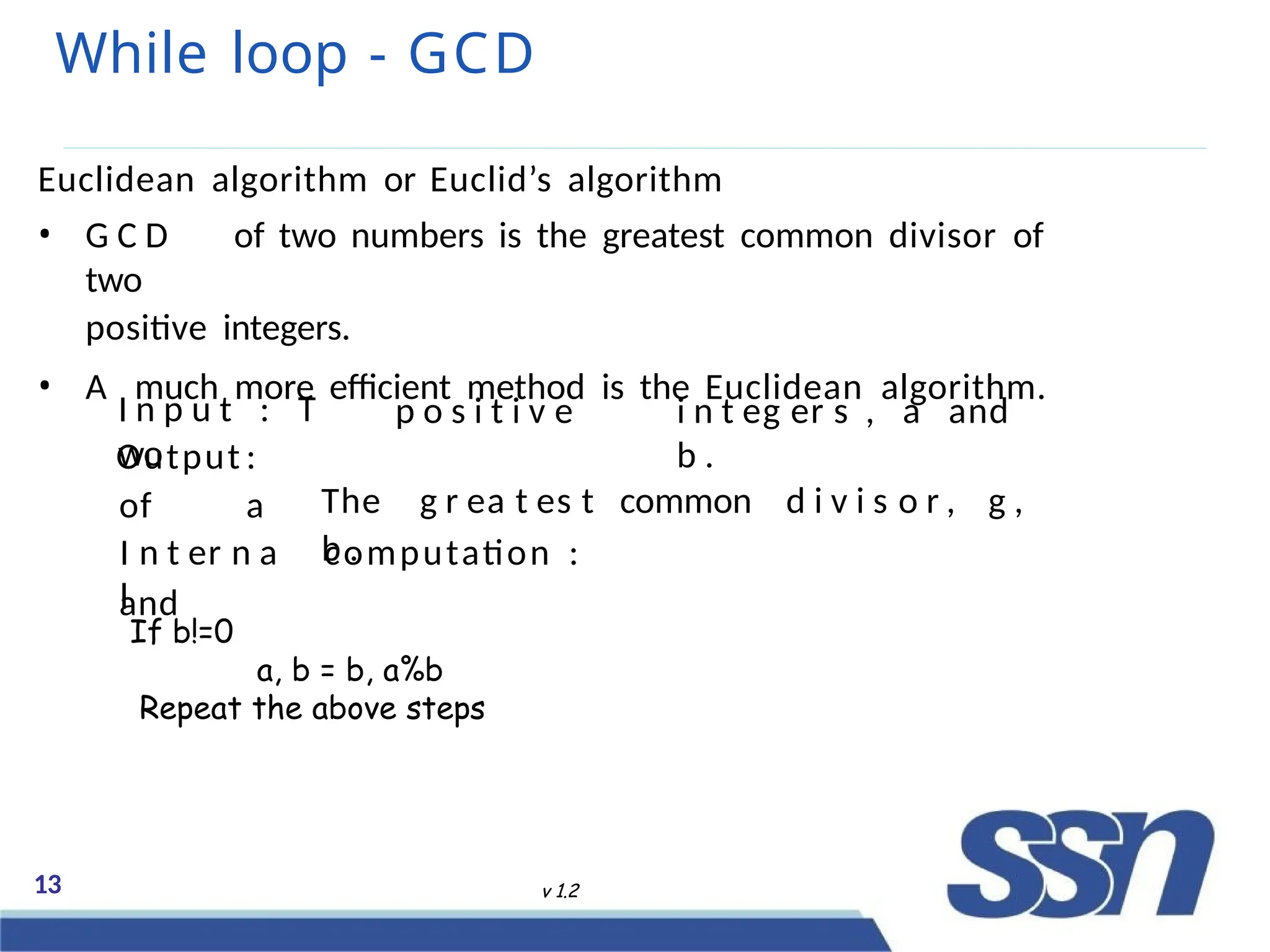
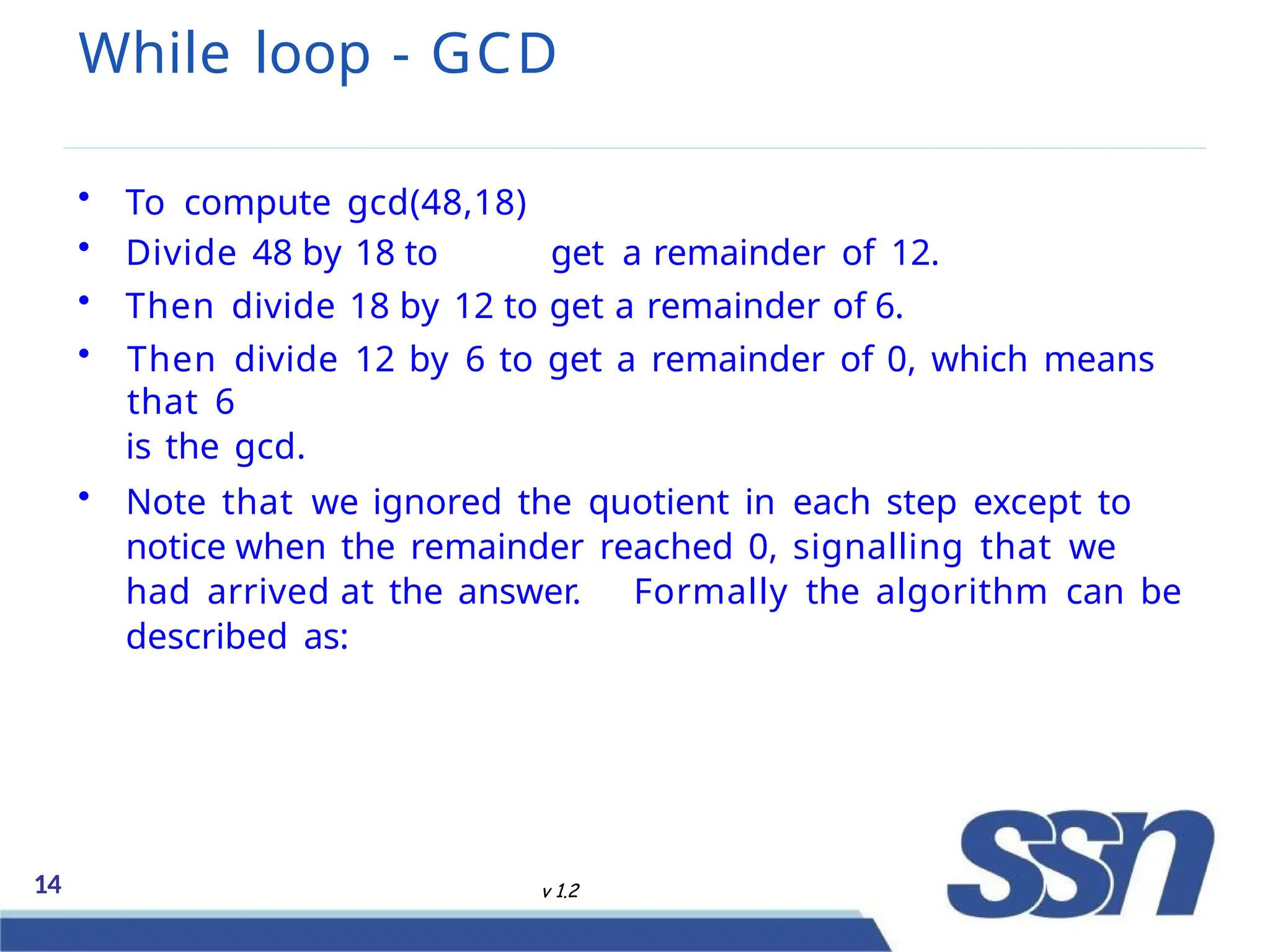
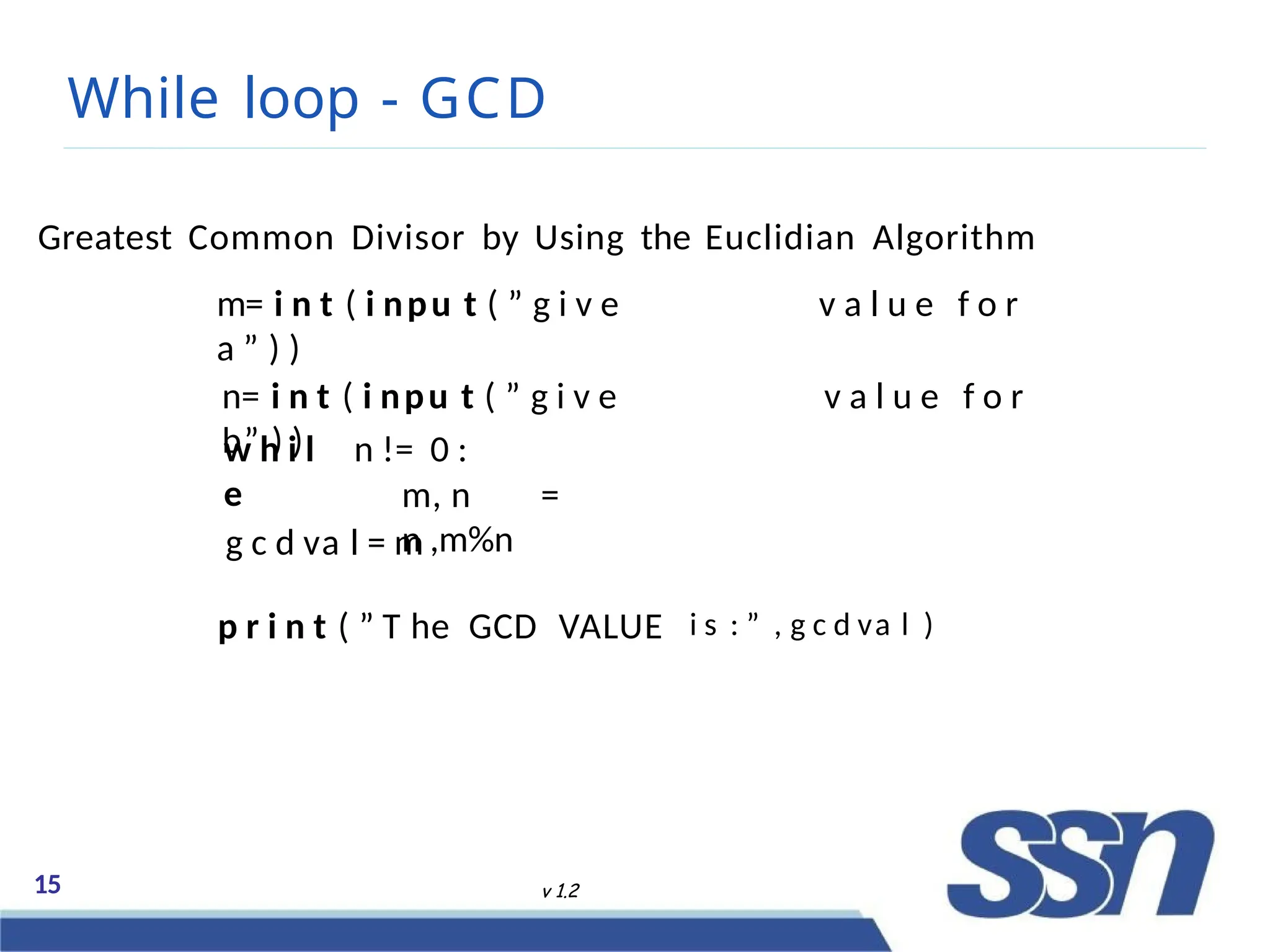

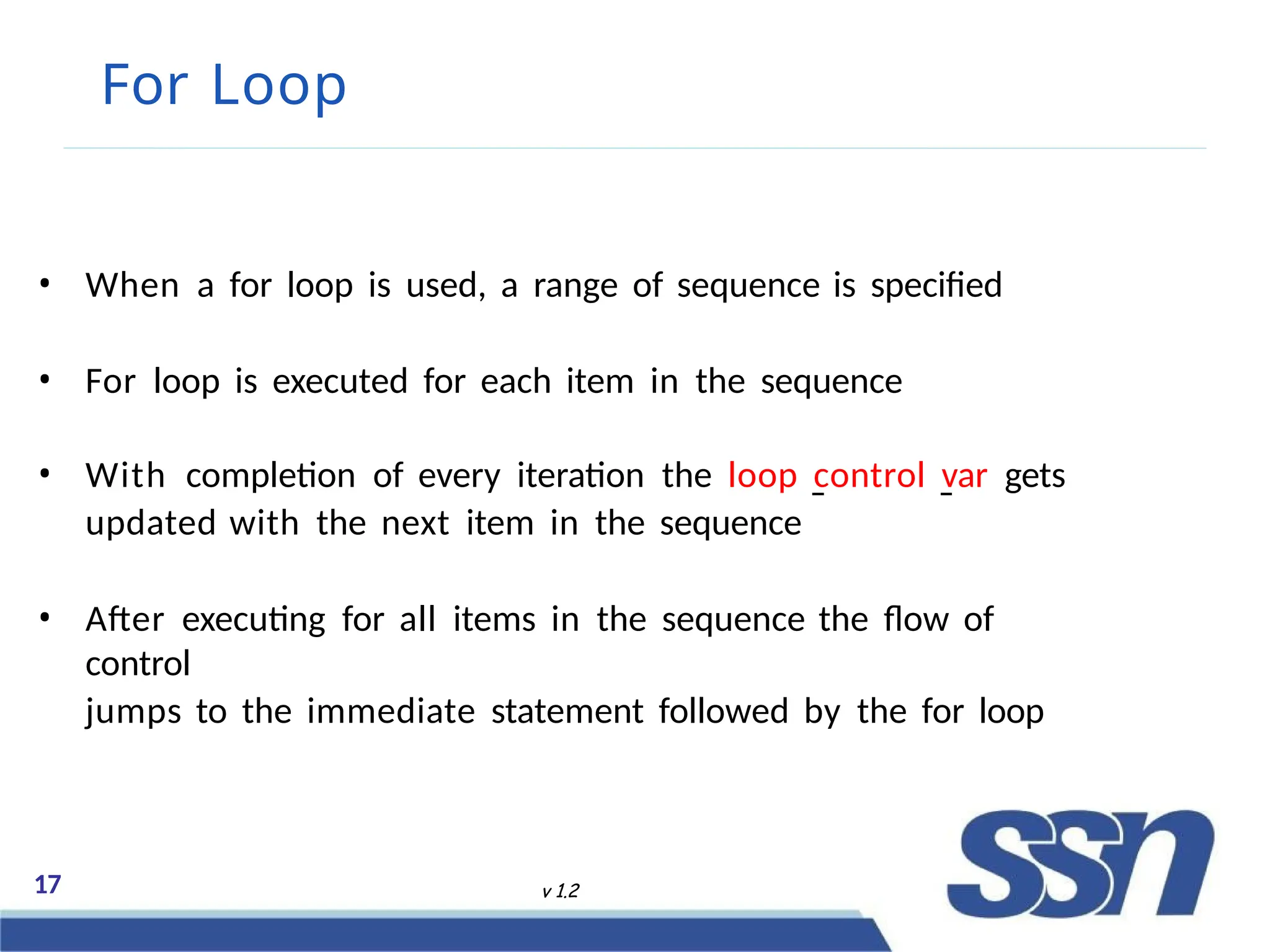
![For Loop
y , z = 1 , 1
fo r i i n [ 1 , 2 , 3 , 4 ]
:
= y
∗i
= z+ 1
y
z
p r i n t ( y ,
z )
O utput
24 5
mb
18 v 1.2](https://image.slidesharecdn.com/iterations-240928072145-4c294cab/75/Iterations-FOR-LOOP-AND-WHILE-LOOP-pptx-18-2048.jpg)
![Example
19 v 1.2
f r u i t s =
f o r
f r u i t
p r i n t
[ ’ banana ’ , ’ apple ’ , ’ mango ’ ]
in f r u i t s :
( ’ C u r r e nt f r u i t : ’ , f r u i t )
Output
Current f r u i t : banana
Current f r u i t : apple
Current f r u i t : mango](https://image.slidesharecdn.com/iterations-240928072145-4c294cab/75/Iterations-FOR-LOOP-AND-WHILE-LOOP-pptx-19-2048.jpg)
